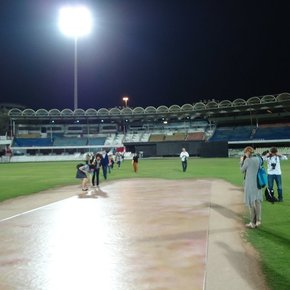Essays
Where to Now: Shifting Regional Dynamics and Cultural Production in North Africa and the Middle East
Platform 010 Editorial
'Platform 010,' writes Ibraaz Editor-in-Chief Anthony Downey, 'Posed an overarching and, hopefully, inclusive question: where to now?' Within a broader context, the aim was toenquire into what the regional politics of cultural production across North Africa and the Middle East tell us about the politics of global cultural production today. What, in sum, are the most urgent issues affecting cultural production within the region and where do we go from here?
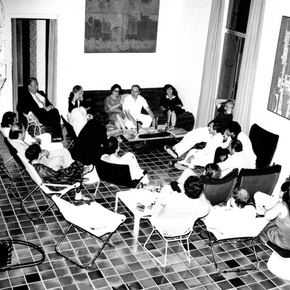
Now Where?
On Navigating Without a Compass
'This essay is not about the politics of terminology,' writes Ibraaz Senior Editor Stephanie Bailey in her closing editorial for Platform 010, 'as much as it is about the histories to which regional terminologies are bound, and the processes that occur in and around their making. The intention is not to re-enforce the application of these terms, nor is it about re-defining the borders to which they extend. Rather, the idea is to consider the dynamics inscribed into words that define certain geographies in order to understand what is at work when they are deployed.'
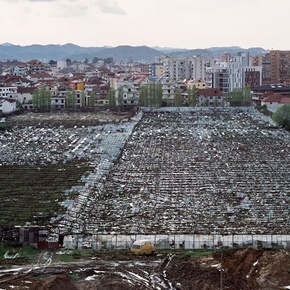
Violent Relatedness, Embeddings, Hindsight
'I favour to look at archives non-chronologically,' writes Ibraaz Contributing Editor Ala Younis, 'Partly because of impatience and un-imagination, but mainly because I do not want archives/collections to be didactic through the logic of relatedness; that they enforce a logic to how or what to read in them.' In this wide-ranging essay, Younis imagines the potentially embedded within the themes of Ibraaz Platform 010 at its close.
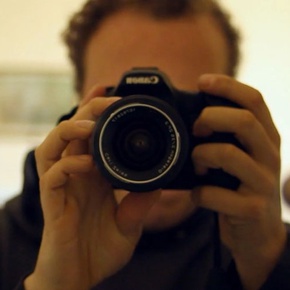
A Faustian Pact
Notes on Geo-cultural Exhibitions
Natasha Hoare examines the phenomenon of the 'geo-cultural exhibition', extrapolating the histories of the World Fair to its contemporary manifestations – the biennale. She explores the concept by looking through the prism of Le Maroc Contemporain (2014–15) at the Institut du Monde Arabe, Paris, 'as symptomatic of the diplomatic and political entanglements that this kind of exhibition making is intrinsically exposed to.'
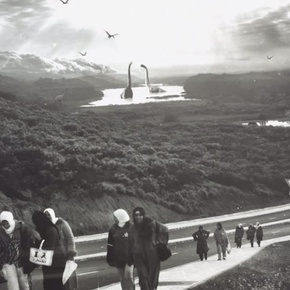
Works on Paper
Artists Intervening in Lebanese Dailies
Between April and June 2016, twelve artists were commissioned by the Association for the Promotion and Exhibition of the Arts in Lebanon (APEAL) and Temporary Art Platform (T.A.P) to intervene in Lebanese newspapers for the project Works on Paper, curated by Amanda Abi Khalil. Four major Lebanese dailies took part: As-Safir (Arabic), Al-Akhbar (Arabic), The Daily Star (English), and L'Orient-Le Jour (French). These four dailies remain some of the most widely read in Lebanon. Works on Paper proposed to use the newspaper not only as a means for publication, but rather as a matter of a space for creative intervention.
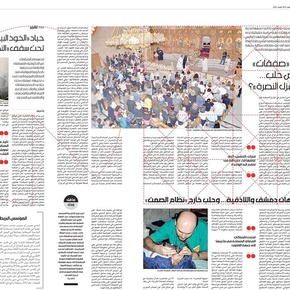
Condemned to Depth
Invisible Architecture in Rana ElNemr’s Streams of Synonyms
'Invisible architecture is alive even when it is dead,' writes Doa Aly. 'Throughout her photographic career, ElNemr has always looked with affection on such tragic and extraneous 'things', slowly transferring seriousness from ambivalent practices bred on the edges of Cairo, from the periphery, to the periphery of the periphery...I'm looking at the buildings in Rana ElNemr's photographs, pondering the roots of desire, the action of multicellular organs collectively carrying out a common function.'
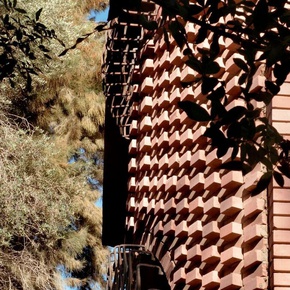
Dear Animal
Notes in a Conversation on a Film by Maha Maamoun
Mohamed Beshir reflects, through a series of notes and conversations, on artist Maha Maamoun's recent film, Dear Animal (2016). 'Before life on the farm...the goat most probably lived the average life of an urbanized animal for years...Yet, none of these experiences could have prepared it for the moment it stood in front of a camera to embody the role of a shapeshifting drug dealer in Maha Maamoun's latest work Dear Animal, '...a 25:30-minute film that interweaves scenes inspired by Haytham El-Wardany's short story 'Sultan Qanun al-Wujud' and the notes Azza Shaaban has irregularly posted on her Facebook wall since leaving Egypt in 2013.
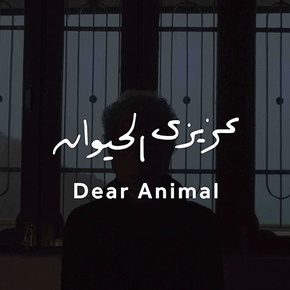
Field Meeting 4: Thinking Practice
Closing Remarks
The following text represents an expanded version of the closing remarks delivered by Ibraaz Senior Editor Stephanie Bailey as part of Field Meeting 4: Thinking Practice. It forms part of the online publication Ibraaz produced for Field Meeting 4: Thinking Practice, which can be viewed here.
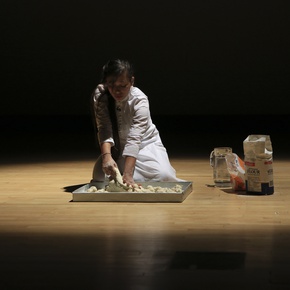
Kamal Aljafari: A Recollection
Hamid Dabashi reflects on the work of Palestinian filmmaker Kamal Aljafari – as well as the contexts behind his works – and scrutinises the legacies of filmmaking, and Palestine, as a whole.
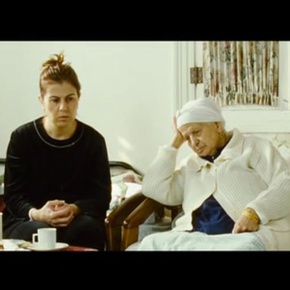
Swimming Backwards
In this deeply personal and reflective short story, Khalid Abdalla muses on family histories and, within that, the role of the sea.
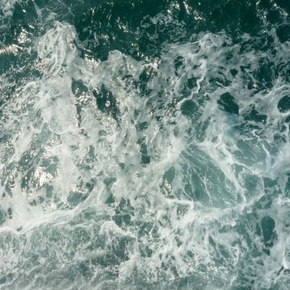
What Representations?
Exhibitions and Other Representations in 25 Years at Witte de With
'The life cycle of a contemporary art institution is an interesting thing. After five years, an institution might still seem like a giddy toddler. Ten years later, it might still show traces of an accumulated vision. But it is at 25 years that an institution really begins to represent a legacy,' writes Nat Muller. Writing through the example of WDW25+, an exhibition project celebrating the 25th anniversary of the Witte de With Center for Contemporary Art in Rotterdam, Muller delves into Marwa Arsanios's investigation into the archives of the former Witte de With director Catherine David's long-term project Contemporary Arab Representations, Beirut/Lebanon.
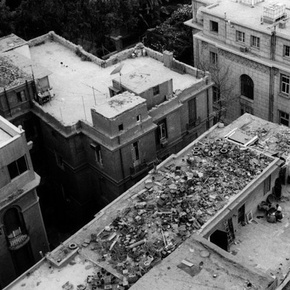
Against the Market
The Art of Shirin Neshat
Shiva Balaghi undertakes a wide-ranging analysis of the work of Iranian artist Shirin Neshat through the prism of her performance in the international art markets. Through this, Balaghi charts the development of Neshat's practice and its critical reception. 'On the face of it', writes Balaghi, '...the market has played a formative role in the field of contemporary Middle Eastern art... [but] there are other stories to be told'.
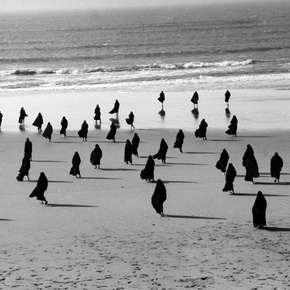
Absent Beirut
Reflections on Reflections
In this personal and reflective essay, Natasha Marie Llorens posits the following: 'During the summer of 2015, I visited Beirut in order to carry out a series of studio visits as part of a long-term research project on the representation of violence in contemporary art. As a result of this visit I have written a reflection based on three works that appear to have been issued from a common wound: the disappearance of Beirut, or one idea of it.'

Archiving a Revolution in the Digital Age, Archiving as an Act of Resistance
'Today, Tahrir Square stands as one of the most documented and mediatized events in the digital age...The very nature of the documentation of this movement is intrinsically problematic. Even though in theory data related to the 18 days exists online, in reality most of it has already vanished into the Internet's bottomless pit of information.' In this wide-ranging essay, Lara Baladi reflects upon the precarious nature of the internet, new media, and archiving in post-2011 Egypt.
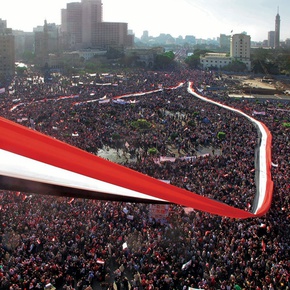
Fahrelnissa Zeid in the Mega-Museum
Mega-museums and modern artists from the Middle East
Sarah-Neel Smith examines the phenomenon of the 'mega-museum' with specific focus: through the artistic biography of Fahrelnissa Zeid (1901–1991), a painter and bi-lingual cosmopolite born in Turkey whose work appeared at the Sharjah and Istanbul biennials in 2015, and 'fit smoothly into an exhibition format.' She writes, 'The contemporary consensus seems to be that the painter's wide-ranging practice forged in twentieth century Istanbul, London, Amman and Paris, positions her as the quintessential 'global' artist.'
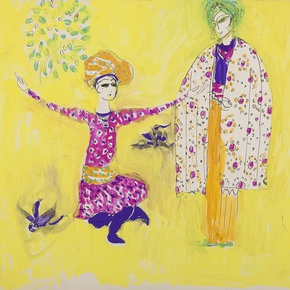
Towards a Spatial Imaginary
Walking Cabbages and Watermelons
'Do creative acts, such as culture jamming, subversion, laughtivism, hacking, public art and performance have the power to produce meaningful change?' asks Heba Y. Amin, as she investigates the political impact of walking cabbages, watermelons, and a variety of fruits and vegetables in cities across the world.
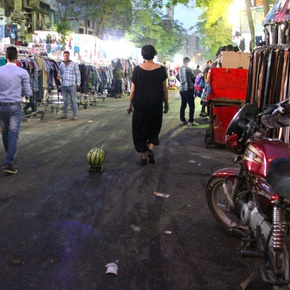
Return to the Former Middle East
Ibraaz 5th Year Anniversary Editorial
In his editorial to mark the fifth anniversary since the launch of Ibraaz, Editor-in-Chief Anthony Downey reflects upon recent cultural and socio-political developments within the Middle East and North Africa and how they have generated new and more overt challenges to cultural production across the region.
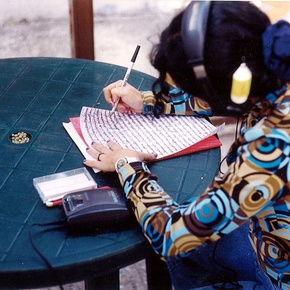
The Turn المنعرج
Socially Engaged Art Practices in Tunisia
Co-authors Christine Bruckbauer and Patricia K. Triki examine institutions, public space and cultural policy in Tunisia, with the proposition that post-'Arab Spring' societies 'need a lobby; a union behind them,' and, above all, 'they need the recognition of their social relevance and the official acknowledgement [of] the creative potential of art.'
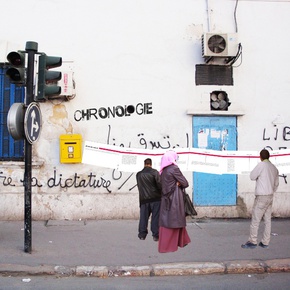
Effective on the Ground and Invisible to the Global Art Market
Participatory Art in the Middle East
'The Middle East has a long tradition of communal and interactive art that goes beyond modern times. For centuries, participatory art was practiced by artists of all ranks.' In this essay, Pamela Karimi examines the wide-ranging effects of participatory art, with a focus on socially-democratizing happenings in Tehran.
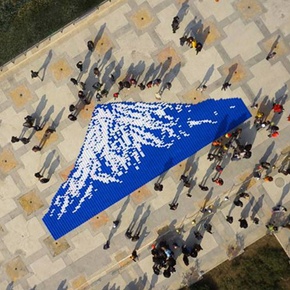
Beware of the Image
APEAL's 'Museum in the Making' and Temporary. Art. Platform. present: The 2016 Ras Masqa Artists' Residency
The image that fascinates Petra Serhal is a 'low-definition' photograph circulated by ISIS supporters on the Web in 2014. It shows an ISIS militant in uniform, holding in his right hand the head of a woman from the top of her hair while raising his left index finger. He has a large victorious smile on his bearded face. This essay is part of APEAL and Temporary. Art. Platform. present The 2016 Ras Masqa Artist Residency, exclusive to Ibraaz.
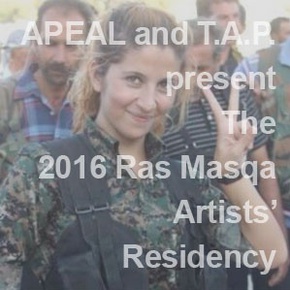
Queer Chronopolitics
Forests, Freaks and Performativity
In this essay, Göksu Kunak interprets ancient folklore within the myth of ritual, and examines its relationship to history and sites of historic relevance – real or imagined.
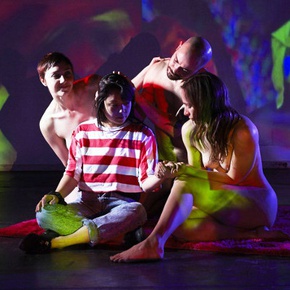
Critique as Infrastructure
Organic Growth and the Rise of Visual Arts Organizations in the UAE
'Scholars have established the pivotal role of arts and culture in forging the modern, cosmopolitan nation-state above and beyond the scale of the city', writes Elizabeth Derderian, who examines the structure, and potentiality, of the Emirati visual art organization.
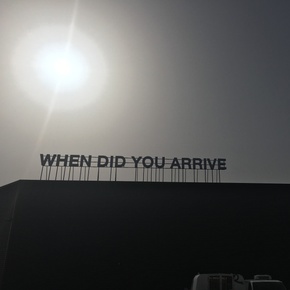
Sous les Pavés, la Plage
On Assumption and Authority
In this wide-ranging, and personal, essay, artist David Birkin assesses the political climate in which he creates his work, which includes the question of who is qualified to speak on a given subject. 'I'm not about to opine on the future of visual culture in a region that is actively engaged in defining its own discourse, distinct from a culturally hegemonic Eurocentric narrative. Nor will I presume to speak for anyone. What I would like to do, however, is to use this oddly mismatched assignment to think through some of the ways in which assumptions about expertize and professionalism impinge on ideas of legitimacy and authority.'
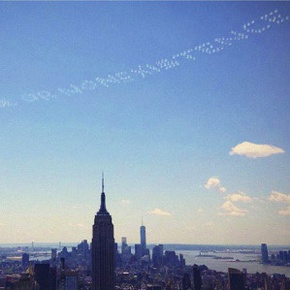
Staging the Nation
Performance creates a set of conditions in which the potential for transformation is possible', writes Barrak Alzaid. 'It does so by unhinging us from our reality and inviting us to occupy a temporary space in which we can imagine alternatives'. By investigating two instances of public theatre in Kuwait, Alzaid discusses how cultural events can reveal the mechanisms of a hegemonic status quo.

Where to Now?
An Introduction to Platform 010
Ibraaz Platform 010, which marks our fifth year of research and publishing, will consider the following question: what can the regional politics of cultural production across North Africa and the Middle East tell us about the politics of global cultural production today? Underwriting this research platform, we will ask an all too pertinent question: what are the most urgent issues affecting cultural production and where do we go from here?

Ibraaz Platform 009: Performance
In his editorial to Platform 009, Ibraaz Editor-in-Chief Anthony Downey asks the question 'What are the genealogies of performance art in North Africa and the Middle East?' In asking this question, Ibraaz's Platform 009 will examine the occluded and overt histories of performance art in the Arab world.

Not so Silent
On Walking and Crawling
Shuruq Harb examines Amal Kenawy's Silence of the Sheep (2009), framing the public performance within the context of WIlliam Pope.L's The Great White Way, 22 Miles, 9 Years, 1 Street (1990). The former, Harb writes is '...an image of political apathy that was met with aggressive resistance and total moral dismay. While the work is a literal mirroring of the image of a hierarchical culture ultimately soliciting submissive attitudes in Egypt, it could neither celebrate nor accept the crowd's resistance and rejection'.
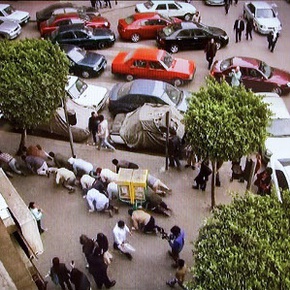
Encroachment on the Everyday
Tehran’s Self-portrait
In this essay, Samine Tabatabaei looks at the photo-series Tehran's Self-Portrait (2008–10) by Iranian artist Mehraneh Atashi and examines both the city through its monuments and urban environments, and positions Atashi as a modern day flâneur, that is one who comments on the socio-political aspects of everyday life as seen from its streets.
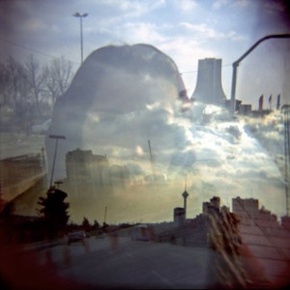
Mindful Body
An Introduction to Body Art and Performance in the Gulf
'It should be noted that performance art in the Gulf does not often happen with an audience gathering at a set place, date and time,' writes Cristiana de Marchi, who examines the diverse practices of performance art emanating from the Gulf in this essay. 'It is more often a solitary action, sometimes attended by few friends also acting as technical supporters assisting and documenting the event that is later proposed as a documentary act. The public, instead of being a direct witness, is a voyeur encouraged by the artists themselves.'
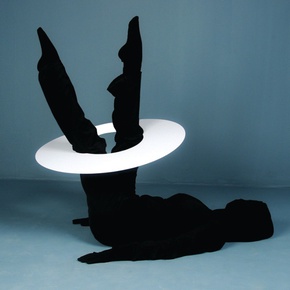
Un/Interrupted Formations
Choreographing Spaces of Gesticulation
In this wide-reaching essay, Salma Abdel Salam examines the socio-political impact of dance as a gesture that is formed in the public sphere, looking at both traditional and more contemporary forms of movement. 'My argument about movement', she writes, '[Intends] to allow for the consideration of the interplay between private and public space and how this impacts the body, and therefore, the subject contained within it'.
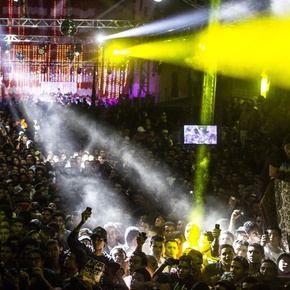
Feeling Dubbing
Six Short Stories on Arabic Voice Acting
In this essay, Monira Al Qadiri examines the phenomenon of Arabic voice acting and its exporting within multilingual forms of popular cultural production, through the prism of short, autobiographical, stories.
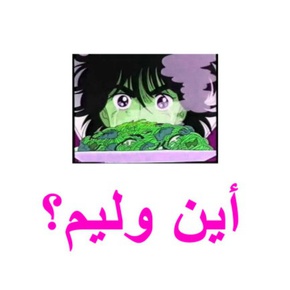
Having the Stars
The Little Deaths of Christodoulos Panayiotou
In this essay, Kate Sutton examines the literal and implied effects of the work of Christosdoloulos Panayiotou, specifically in Two Days After Forever (2015), the Cyprus Pavilion at the 56th Venice Biennale. 'Two Days After Forever offer[s] alternative endings,' she writes, 'staging cycles of transformation.'
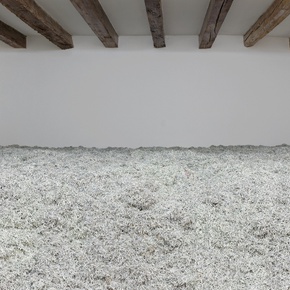
Treading Gulf Waters
Xanith is Arabic slang for males with effeminate characteristics,' writes Ahmad Makia. 'Under Islamic scholarship, they are depicted as a unique people with innate qualities: men who resemble women in voice, features, and gait. Islamic judgment decrees that, since xanith have 'inherited' these qualities, they are not guilty of their practices, but immoral if they choose to be.' This essay examines the phenomenon of the xanith in the Gulf and discusses performance as socially and stylistically distinguished.
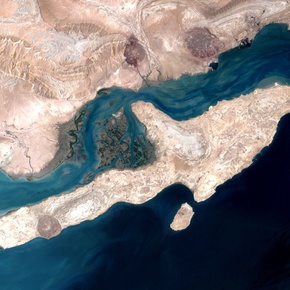
In and Out of Algeria
Bruno Boudjelal's Documentary of Affect
In this essay, Katarzyna Falecka examines the work of French photographer Bruno Boudjelal. Of Algerian origin, Boudjelal travels frequently between there and his home country of France, often keeping 'travel diaries'; images he has taken that consistently question personal and cultural identity. Through cultural and technical observations, Falecka builds a picture of Boudjelal that places him within a network of complex trans-cultural concerns.
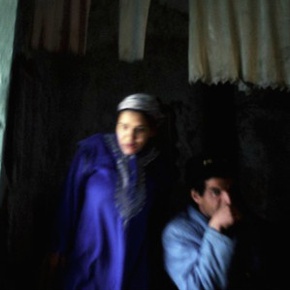
An Unknown Lover's Discourse
An Ode to Performing Subjectivity in Research
'Until now, I do not feel that I chose Letter from an Unknown Woman,' writes Mandy Merzaban, 'as my subject of study, since my relationship with the story did not begin with a conscious decision. Letter simply stumbled into my life, invoking that fitting kernel of wisdom: you do not choose with whom you fall in love.'
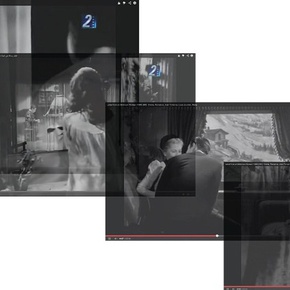
Halim El Dabh
An Alternative Genealogy of Musique Concrète
Fari Bradley, with assistance from Chris Weaver, unearths the biography of Halim El Dabh, an Egyptian musician who composed one of the first known pieces of electronic music: Expressions of Zaar (Ta'abir al-Zaar).

The Image(s) Between Us
The Performance of Death in a Post-9/11 World
'Our century began with what Jean Baudrillard called the 'mother of all events' that would usher us into the era of highly mediatized, visually compelling global terrorism...,' writes Doa Aly. Using Jean Baudrilliard's The Spirit of Terrorism as a point of departure, Aly examines the image of death and the 'online performances' of contemporary terrorist groups, notably ISIS.
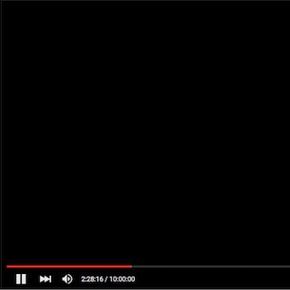
Criticality Performed Itself
The performative in the work of Hassan Khan
'Hassan Khan often demonstrates a tendency to implicate the viewer in his works. 'This white space is a stage – a platform that highlights and draws out a set of material conditions and coldly inspects them...' In this essay, Ajay Hothi explores Flow My Tears, the Policeman Said, Hassan Khan's first solo institutional show in Germany, and raises the notion of performativity as an integral part of the exhibitionary process.

On Constant Invention
Notes on Maverickism as Genealogy and Genealogy as Approach
In this personal response to the Platform 009 theme, Hasan Hujairi considers what it means to be a practicing artist today, and if there are indeed any collective lineages with which an artist from the Middle East and North Africa region might align themselves, particularly in the realm of sound art and formal music.
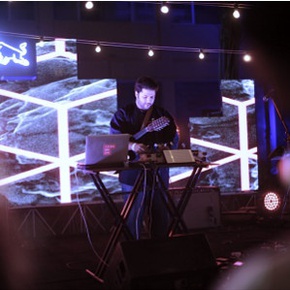
Being ‘Inappropriate’
The Unspoken Battle of Self-Censorship
Director of the BuSSy project, Sondos Shabayek, discusses how issues of self-censorship feed into a collaborative performing arts project that documents and gives voice to untold stories surrounding gender in Egypt. 'These stories,' writes Shabayek, 'are later shared on stage by their tellers in performances usually referred to as "testimonial theatre"... Given the nature of such testimonies, our constant battle is how to reflect the reality as truthfully as possible and – quite literally – get away with it.'
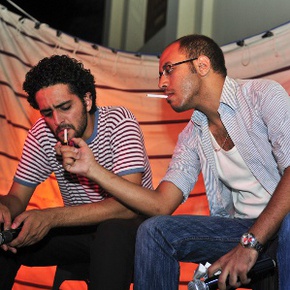
Bouchra Ouizguen
The Subversive Feminine
'The traditional 'aita performance in Moroccan society is often overtly sexual... the women sing about lovers, adultery and abandoned family or roots.These performances are deliberately designed to infiltrate the public space of ritual and ceremony with the intimacies of private life.' Nahrain Al-Mousawi writes about Bouchra Ouizguen, the Moroccan-born artist whose work falls somewhere between dance and socially-oriented performance art
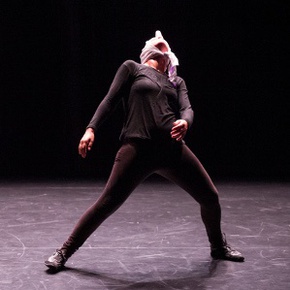
'A Deep Reverence for the Region's History'
Edited Urbanism on Dubai Creek
In this essay, Todd Reisz extracts the histories, both real and fictional, of Dubai's Aladdin City, a development project launched in February 2015. He explores its beginnings, its potential futures, and the reactions drawn from populations, both local to the UAE and beyond.
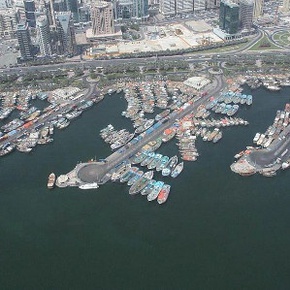
The Life and Times of Louis Saboungi
A Nomadological Study of Ottoman Arab Photography
In this essay, Stephen Sheehi examines the complexities of discourse around photography's history, specifically during the Ottoman period. Sheehi looks at the phenomenon through the biography of two brothers, Louis and Jurji Saboungi, and how through their work the 'photograph was charged to stabilize, or at least contain, the latent violence and displaced lived-experiences that haunted photography's positivist representation.'
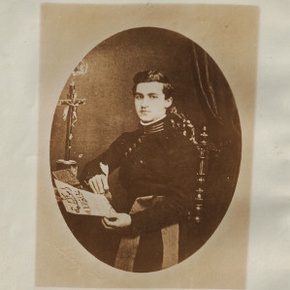
Performativity and Public Space
Interventions as Performative Gestures For Political Engagement in Jordan
'This is a speculative piece,' writes Samah Hijawi in this essay for Ibraaz Platform 009, 'in which I will try to unpack the relationship between artists' works in public spaces as performative gestures of active participation and critical citizenship; engagements with state security mechanisms of monitor and control.'
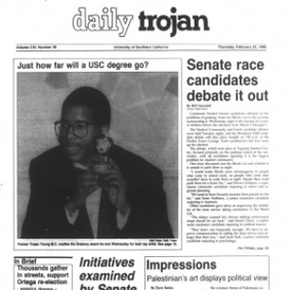
Transition Times
Performing Armenity at the 56th Venice Biennale
This essay was written for the Golden Lion award-winning Pavilion of Armenia's catalogue at the 56th Venice Biennale (2015) curated by Adelina Cüberyan von Fürstenberg. It considers how history is articulated in the work of artists who engage with their cultural heritage through the memory of displacement.
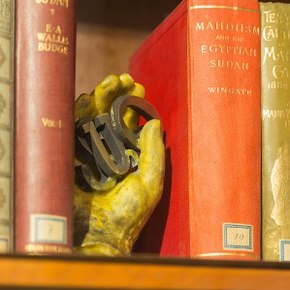
I Once Fell in Love with an Audience Member
Practice, Performance, Politics
In this essay, Tania El Khoury considers performance through the lens of her own practice as a live artist and as a member of Dictaphone Group, a live events project El Khoury started with Abir Saksouk. What emerges is a perspective of a contemporary artist working within the frame of performance, and how one within this frame might define their own practice through experience.
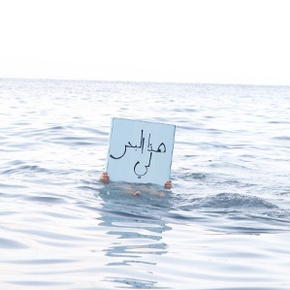
Building in A-topia
For Franco Berardi, this 'text is intended as a reflection on deterritorialization through the contemporary sentiment of displacement. Deterritorialization is a process that has traversed the entire history of Modernity, and it implies the transformation of the relation to the territory. Displacement is the abandonment of a physical place and the transfer to a different one, deterritorialization is the anthropological effect of displacement that is not only geographical, but also linguistic, affective, aesthetic and so on.'
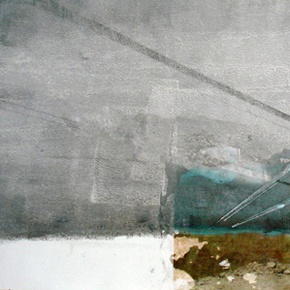
Letters to Naeem Mohaiemen
In this essay, Lara Khaldi presents a series of letters addressed to the writer and artist Naeem Mohaiemen. Their contents trace a history of hijackings, protests, conflicts, and shelling, as depicted in the Mohaiemen's film works, and charts the relationship that Bangladesh has with its allies and neighbours.
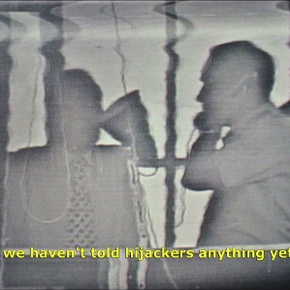
The Shadow Economies of Being Seen
Determining the Axis of the Global South and Middle East
'My aim in what follows,' explains Timothy Cooper, 'is to explore the interrelated points of departure and arrival that delineate the axis of Global South and Middle East.
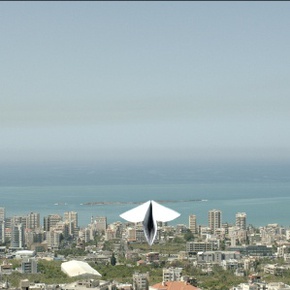
Atmosphere
A Curatorial Take on the Global South
In this essay, Tirdad Zolghadr looks at recent work by sociologist and cultural historian Esmail Nashif, before addressing the topic of the 'Global South', and uses the issues, themes, and concepts that arise as a prism to understand the complexities of exhibition and location as proposed by the 5th Riwaq Biennale in Palestine.

Mobile Maghrebs
Contemporary Cinema from North Africa
"Recent Maghrebi film, too, has 'burned' – overtly and less overtly breaking with dominant national discourses of identity and progress, whether social realist, third cinema, or commercial – as increasing numbers of Algerian, Moroccan, and Tunisian filmmakers seek out new perspectives, influences, affiliations, and audiences." Suzanne Gauch examines contemporary North African cinema and offers her own perspective on its evolving contexts.
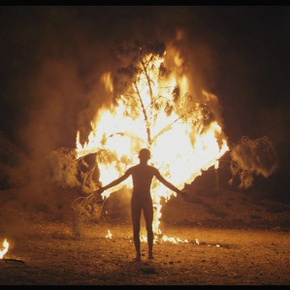
Maps That Don’t Belong
In this essay, Natasha Ginwala reconsiders the Global South as a politics of place, "whereby," she writes, "any perception of an origin is contingent upon circulatory flows of thought-models, materialities of liberation and civilizational intersections...Such a reading of affects may allow us to refuse the dominant vector of modernity as Eurocentric pyramidal form – from 'First' to 'Fourth World'."
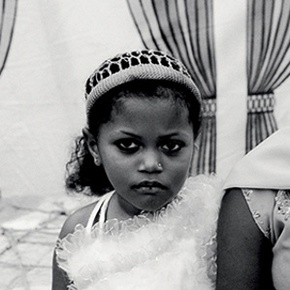
How Toshihiko Made Me Understand Islam
"Who would have thought that the best translation ever to be conducted of the Qur'an was actually in Japanese?" Monira Al Qadiri examines a 1958 version of the Islamic holy book by Dr. Toshihiko Izutsu, who finished reading the entire Qur'an only one month after beginning to learn Arabic. In this essay, Al Qadiri unpacks some of Dr. Izutsu's insights, nearly all of which remain untranslated from their original Japanese.
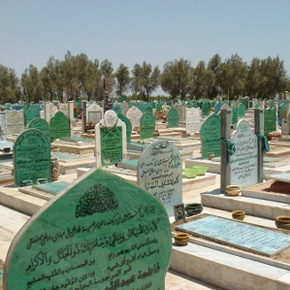
BOOM, BOOM, BOOOOOM!
Notes on a Giant Implosion
'My goal is in no way to criticize the art market,' writes Hakan Topal. 'It has been done many times before...[and] it is not the market but the dominance of the new market ideology that is the main problem. In other words, the financialization of every aspect of cultural production suffocates the possibility of salient voices. Within these circumstances, the boom repeats itself, first as a spectacle, then as farce.'
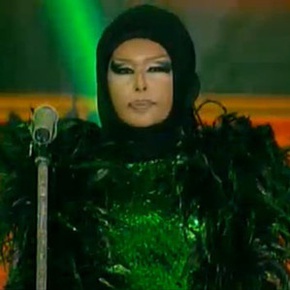
Living Roundabouts in Bahrain
Five Stages of an Artist Residency
In this analysis of the functions, purpose, and realities of the artists' residency, Rheim Alkadhi documents her own experiences in Bahrain and explores what it means be a producer of cultural artefacts amind a series of local, regional, national, and international difficulties. She asks, 'How to produce meaning from such a series of surfaces? How to disrupt the banality of institutionally sanctioned art making, especially amid local and global subjugation? How to seek shared liberation within such a temporary engagement?'

Aesthetics of Migration
Street Art in the Mediterranean Border Zones
The news and images of migrants drowning on flimsy boats on the Mediterranean or washing up along its shores – dead or alive – is becoming a recurring representation in the archive of clandestine migration into Fortress Europe. Clandestine migration has been on the rise since 1995, when several European Union nations implemented the Schengen Agreement to erode internal EU borders and fortify external ones. Nahrain Al-Mousawi explores the phenomenon in relation to an emergent street art practice on the Mediterranean borders.
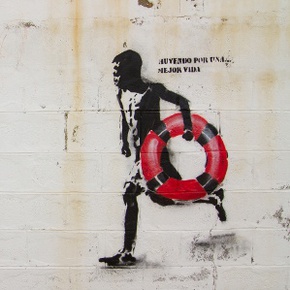
Other Maps
On Bouchra Khalili’s Cartographies
For Bouchra Khalili, the exercise of mapping is an expansive and varied intellectual undertaking that employs a multiplicity of methodologies to redraw the world and the stories within it. In this essay, Diana Nawi examines Khalili's practice as a 'road map' through international histories and cultural production.
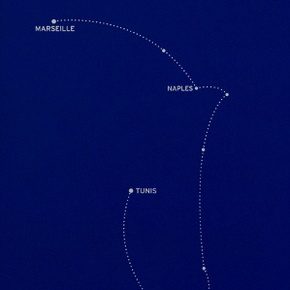
As in an Ocean
On Nikolaj Larsen's End of Dreams
'Although migration has been a recurring theme in my work in the past few years, I don't really want to be known as the "migration" artist,' Nikolaj Bendix Skyum Larsen explained once. Adrian Dannatt proposes that it is this very ambiguity in Larsen's long-term artistic project that parallels the inherent fluidity of the situations with which he engages: specifically, the daily realities of current immigration.
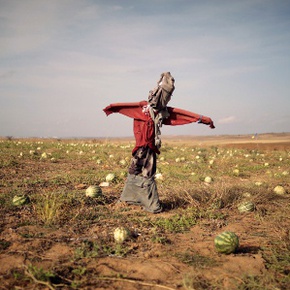
'I am an Artist'
Portrait of a Salafi en abyme in the Cyber World
In this essay, Gilles Kepel discusses Romuald Karmakar's film, Hamburger Lektionen (Hamburg Lectures, 2006), which was presented as part of the German Pavilion at the 55th Venice Biennale, for which this essay was written. Kepel begins by focusing on Moroccan Salafi sheikh Mohammed al-Fizazi – the flm's sole characer played by actor Manfred Zapatka – who delivered the Ramadan lectures on 3 and 5 January 2000 at the Al-Quds Mosque (Jerusalem Mosque) in the Hanseatic city, reciting the German translation of two of these lectures verbatim. They were included in a nearly three-hour-long video in which we see and hear the original scene in Arabic. This video was sold in the bookstore adjacent to the makeshift Muslim prayer room, which was notably frequented by three of the September 11 hijackers as well as by immigrant workers and Arab students, Moroccan but also Levantine or Egyptian, some of whom came to the lectures with their children.
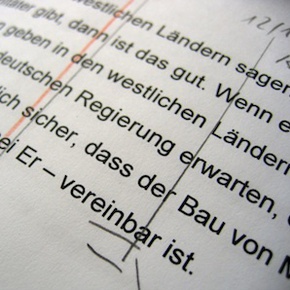
Farther Than Language Can Reach
On the Work of Basma Alsharif
The underlying dilemma of complexity in Basma Alsharif's 2012 exhibition, Farther Than The Eye Can See, is the focus of this essay, in which Mahmoud Abu Hashash taps into something he felt from Alsharif's work at the time. This was a sense that the artist was attempting to grasp an unknown world through her work: a world to which she felt bound, but did not know exactly how, or why. The characteristics of that world, Abu Hashhash perceives, are more or less ambiguous. In any case, whether it be space or place, Farther Than The Eye Can See presented to this author a world absent from the body, scattered between lines, images and sounds. Abu Hashhash argues that Alsharif uses fragmentation and disclocation – of place, time and self – as a visual tactic to re-present issues (such as the Palestinian occupation), which we as viewers have become desensitized to through over-representation.
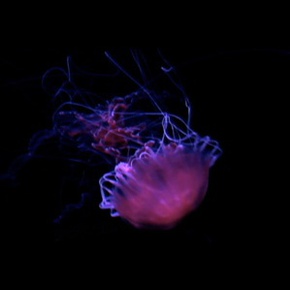
Platform 008 Editorial
In his editorial for Platform 008, Ibraaz Editor-in-Chief Anthony Downey introduces our research question for the next six months: how, he asks, do we productively map the historical and contemporary relationships that exist between North Africa, the regions of the Middle East and the Global South? Proposing a long-term need for a critical epistemology that will enable us to think beyond the former Middle East, he outlines an increasingly dynamic geopolitical space that could, in time, effect more radical forms of cultural analysis and knowledge production.
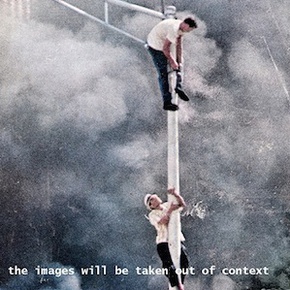
The Global South
Conflicting Narratives and the Invention of Geographies
This essay is a reflection on the term 'Global South', and, at the same time, a discussion of the challenges we face while thinking about the cultural and political practices inscribed in the geography to which the term refers. Its central argument is that in order to have a Global South as a space from where one discusses the world we now live (and, of course, the objects/subjects/knowledge immersed in this world), holding an epistemic position is of fundamental importance. Such a position, as we shall see, requires that we raise certain questions and carefully consider specific approaches, which might help us achieve a more complex idea of what the Global South is.
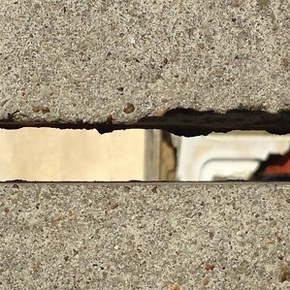
The Geopolitics of Contemporary Art
The discourse on the geopolitics of contemporary art is caught within two conflicting paradigms: an emerging view that stresses the open system of global flows, and the residual framework that is derived from the bounded territories of national structures. This essay seeks to challenge these binary options by proposing a view from the 'South'. 'From', and not so much 'in', 'of' or 'here', is a key term today to rearticulate these polarities, and other related ones such as local/international, contextual/global, centre/peripheries, 'West/non-West'.
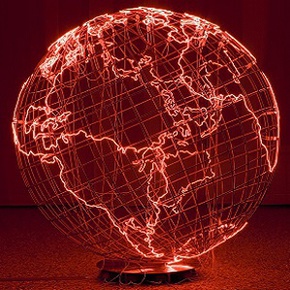
The North of the South and the West of the East
A Provocation to the Question
The main assumption in this essay is that the 'East/West' division was an invention of western Christianity in the late fifteenth and early sixteenth centuries that lasted until World War II, and was used to legitimize the centrality of Europe and its civilizing mission. From World War II onwards, there was a shift to a 'North/South' division, which was used to legitimize a mission of development and modernization. Walter D. Mignolo traces the accumulation of cartographic meanings that have created the image of the planet since the sixteenth century, revealing how mapping has been a powerful tool through which western civilization created, transformed and managed the image of the world.
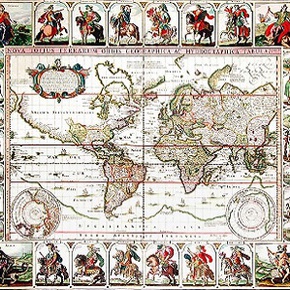
Between Iran and Dubai
An Art Collection as an Alternative Archive of Iranian History
In this essay, Shiva Balaghi explores the idea of writing alternative histories of Iran using the Mohammed Afkhami collection as an archive. Here, the artist becomes the scribe, the artwork the document, and the collector the archivist. Taking Arlette Farge's notion that traces of the past present themselves in an archive in random, sometimes chaotic fashion, Balaghi creates an alternative timeline of contemporary Iranian history.
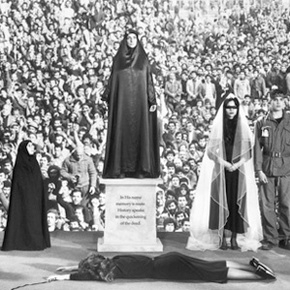
Tracing Dissent at the Margins of Empire
Pan-Kaffirism in Iraq, South Africa, and Sri Lanka
This paper is part of the research project 'The Pan-Arab Hangover', which focuses on the lingering ruins of Arab nationalism and how it plays out in the region's contemporary cultural production. It looks at Arabism's parent ideologies – notably German romanticism and idealism – and how 'unified Arabism' in art, culture, and writing is held up as a potential 'cure' to the region's problems.

The Jerusalem Show VII
Outside Looking In: Taking a Title and Running With It*
This was written as part of the Ibraaz-produced online catalogue for The Jerusalem Show VII: FRACTURES, curated by Basak Senova, organized by the Al-Ma'mal Foundation, and staged in 2014 as part of Qalandiya International 2014. In the text, Stephanie Bailey considers the meaning of the exhibition's title in relation to the context that framed the show.
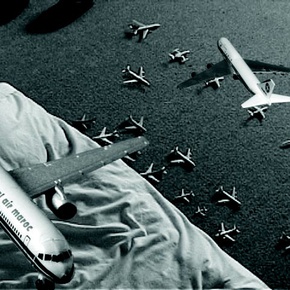
Platform 007: Future Imperfect (Part II)
Building Institutions Through Practice
In part two of Anthony Downey's editorial for Platform 007, Ibraaz's Editor-in-Chief reflects on the contributions to this platform to date. In posing the question, What is the future of arts infrastructures and audiences across North Africa and the Middle East?, Platform 007 produced responses that take into account where we are now in developing sustainable institutional models and, conversely, what is the future of current institutional models. In addition, contributors to Platform 007 asked what new institutional forms are emerging and how current institutions are adapting, if at all, to the sociopolitical and cultural realities of the region, not to mention broader global imperatives.
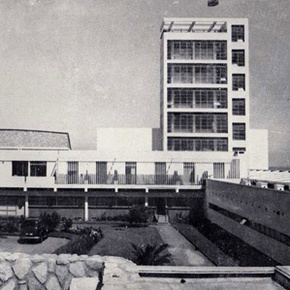
Notes on Performative Urbanism
An Emergent Design Approach to the Gulf
The Gulf is home to some of the world's most controversial settlements. These postcolonial cities of the late twentieth century have grown out of new technologies, telecommunications and mega infrastructures that have brought about dramatic morphological and ecological changes: a fusion of reality and computer-generated imagery makes the banal landscape look evocative and artificial. This partial and virtual condition gives rise to fantasy and the promise of the future, as explored by George Katodrytis.
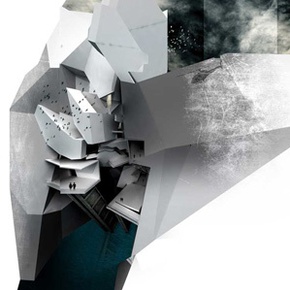
Measures of Uncertainty
In this essay, Tina Sherwell examines Jawad al Malhi’s latest body of work Measures of Uncertainty (2013–14), which consists of over 20 large-scale paintings of crowds in the Shufhat Refugee Camp in occupied East Jerusalem. In this collection, al Malhi is interested not in the usual media focus on the stereotypical images of Palestinians and Palestinian crowds in general, but rather in capturing the moment after the solidarity of the crowd dissipates and collectivity melts into thin air.
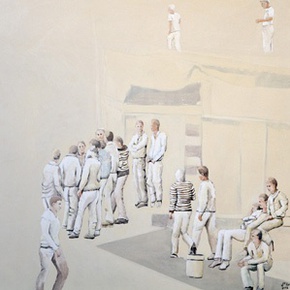
Scripts of the Art World
Did a new kind of art emerge after Gezi? As the art world is pondering the aftermath of such activist events, it is developing an ethical and political discourse that is problematizing sponsorship relations in art as its central issue and demanding that institutions and galleries recognize artists' rights. In this essay, Burak Delier objects to such developments and examines how we should manage the 'trade of ethics' that is conducted by means of the art world and our representative position within it.
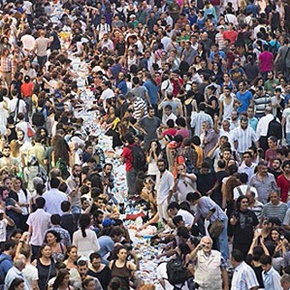
Making Stories Visible
A Yemeni Art History
A month after former president of Yemen Ali Abdallah Saleh formally left power following a year of contentious mobilizations demanding his overthrow, the walls of Sana'a started being covered by colourful murals and sprayed with myriad paintings. Located on walls that were bullet-marked, they were attributed to painter Murad Subay. Through this initiative, he triggered an artistic action characterized by the use of public space not only to paint, but also to reflect on issues of political concern through art, involving a participative audience.

The Future of Art in the Age of Militarized De-Production
Re-Thinking Cultural Development in Palestine
The culture of violence imposed by Israeli militarism disrupts and constrains creative practices in the Occupied Palestinian Territories (OPT). Israel's recent war of aggression against Palestinians in Gaza, which began in early July 2014, serves as a brutal reminder that Israel is in full control of accelerating the future of Palestine's cultural de-development.
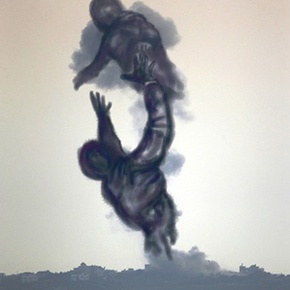
'We, the Intellectuals'
Re-routing Institutional Critique
If intellectualism is indeed an 'intervention', how does it get performed and embodied by the institution of art, and what visual traces does it leave behind through images that get institutionalized as signatures of protest? And when hegemonic structures and the intellectual opposition become part of the same camp in anti-colonial movements, what implications does the critique of institutions then take?
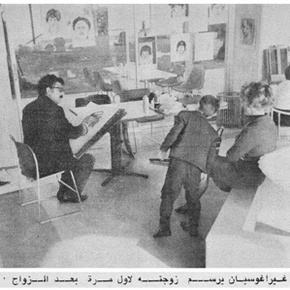
Informal Domains
Art and Culture Beyond Institutions in Amman
Over the last decade, the arts and culture scene in Amman has been growing considerably. Although cultural production is not yet on par with a capital city of three million inhabitants of complex political histories, nor is the city a 'sexy' destination for international curators or cultural producers, Amman has been contributing a hefty calendar of cultural events in recent years.
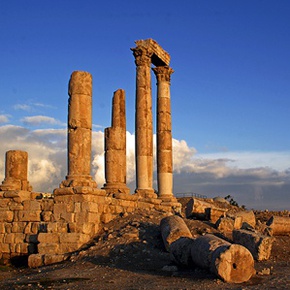
Walling Strategy
Can T-Wall Murals really Beautify the Fragmented Baghdad?
Since April 2007, Baghdad has been experiencing a walling strategy designed by the US-led multi-national forces (MNF) that were then occupying Iraq. The MNF justified their strategy of surrounding some neighbourhoods with concrete blast walls (also known as 'T-walls') as a way of protecting city residents from the urban violence severely affecting daily life in Baghdad. This essay, originally published on Jadaliyya, questions whether T-wall murals in Baghdad are an integral part of the walling strategy itself, and asks whether they can be seen as legitimizing the official narrative in which current social divisions based on religious and sectarian differences have disappeared.
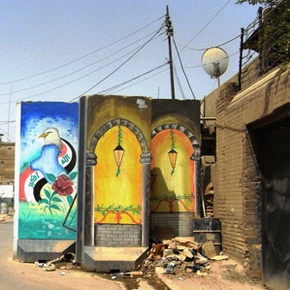
Future Fiction
In the Shadow of Nasser
Visual and literary analysis of images from the 1960s hold the key to understanding the resurgence, recycling, and recoding of Nasser's iconography as a way of legitimizing contemporary forms of authority. In this essay, Tarek El-Ariss sketches a critical trajectory to be explored further, that engages with the way a particular Arab nationalist fiction – the future fiction traditionally portrayed by Gamal Abdel Nasser – is being recast with the iconography of Abdel Fattah al-Sisi, the army general and newly-elected president who is increasingly presented as Nasser-like. El-Ariss questions if this is part of an attempt to reactivate a fictional model that allows Egyptians to reconnect with both past and future.
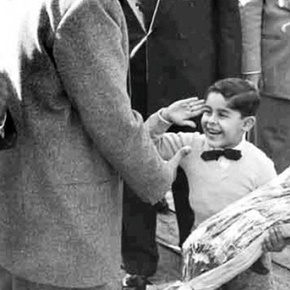
Utopian Dust Versus Perfumed Amplification
Object Lessons from Saadiyat Island and Gehry’s Guggenheim, Abu Dhabi
'The good news about the future is that there is not only one but many, and none will abide by expectation. The Gulf will not taste of Charles Fourier's utopian lemonade, even if the Arctic melts, nor will it smell like Serpentine, the pride of London's art-world ... It's necessary to state this simply because we exist at a time when a more singular notion of 'the future' is being furiously hedged against,' writes Guy Mannes-Abbott in a text that imagines a future institution based on those that exist today.
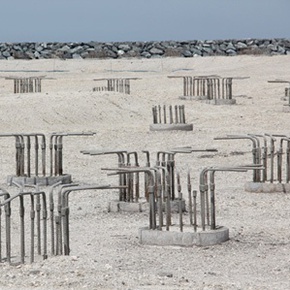
Anachronistic Ambitions
Imagining the Future, Assembling the Past
In this essay, Sheyma Buali recalls an exhibition at London's Victoria & Albert Museum based on Hari Kunzru's novella Memory Palace. With this as her starting point, Buali weaves a complex narrative around memory, documentation, and 'conscience control', that reflects institutional attitudes towards the past and its relationship to the future in the Middle East and North Africa.
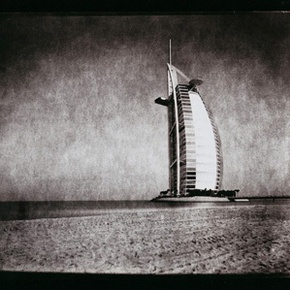
Filling the Gaps
Arts Infrastructures and Institutions in Libya Post-Dictatorship
Hadia Gana explores the contemporary situation of Libya in this essay, taking into account the country's history of civil strife, and asks whether that which constitutes Libya's cultural specificities is sufficient enough for the development of the nation's cultural infrastructures.
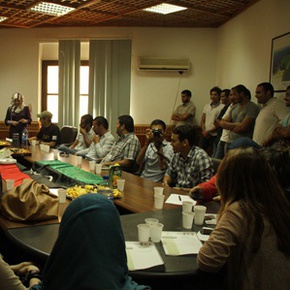
Knowledge Bound
Reflections on Ashkal Alwan's Home Workspace Program, 2013-14
'In an industrial section of East Beirut, near the underpass beneath which trickles Beirut's withered river, a sun-parched pink building nestles between vast warehouses of car dealerships and timber factories.' In this essay, Rachel Dedman examines, explores and evaluates the Home Workspace Program at Ashkal Alwan in Beirut – a very unconventional art school – while comparing it to other examples of independent educational initiatives.
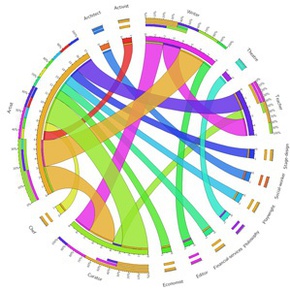
Designing the Future
What Does It Mean to Be Building a Library in Iraq?
As the idea of building a new library in Iraq cultivates, AMBS Architects look at the history of books and libraries in the country and its culture of literary reception. Examining new models, the firm explore the potential of a new public library and the importance of architecture beyond bricks and mortar.
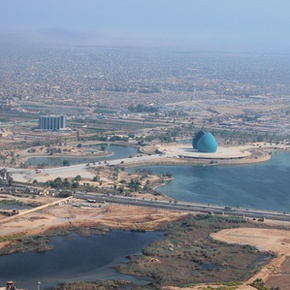
Other People’s Stories
Or, Severing History From the Person
Personal stories can reveal much about what is to come. History repeats itself in the familiarities we find in other people's tales and the way experiences can move from the particular to the universal. In this essay, Fawz Kabra examines Iman Issa's installation Common Elements (2013), and unpacks a methodological process that enables the artist to reflect on the instability of memory.
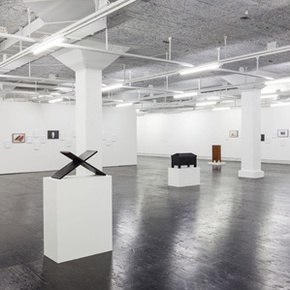
Beyond the Odalisque
A Perspective on Algeria's Cultural Scene
In this essay, Sultan Sooud Al-Qassemi suggests a premise: that Gulf cities are slowly replacing the traditional Arab capitals of Beirut, Baghdad, Cairo and Damascus as centres of culture in the Arab world. Using Algeria's cultural output as a prism, Al-Qassemi provides a comparative analysis of cultural production in the Middle East.

Rethinking National Archives in Colonial Countries and Zones of Conflict
The Israeli-Palestinian Conflict and Israel's National Photography Archives as a Case Study
Zionist photography archives of the State of Israel – civil and military – reflect pre-state and state activity and policy in the field of photography, and form part of a larger and more powerful institutional system. These archives are not neutral and are connected to a national ideological system that loads them with meaning and a Zionist worldview. The way they are structured, function, collect, catalogue and preserve materials, and their policies of exposure or censorship, is driven by a national ideology, serves its fundamental norms, values and goals, and helps in constructing its symbols and language.
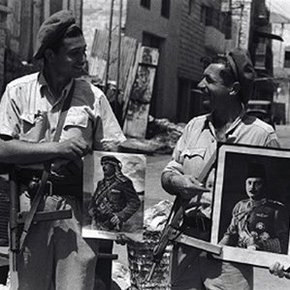
Archival Dissonance
Ibraaz Platform 006 Editorial
An archive is often viewed as a record of sorts: a collation of historical documents that orders and records information about people, places and events. This view, nevertheless, has tended to obscure a crucial aspect of the archive and the archival process: it is not only unstable and subject to the vagaries of time and history, but the physical archive and the process of archiving is as much about determining the future as it is about defining the past.
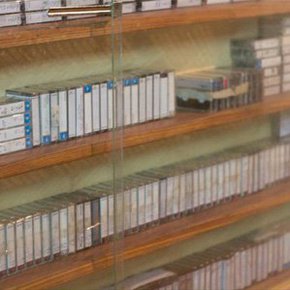
Housing Archives
When Buildings Become Part of the Record
Housing Archives attempts to record the journey of Tsolin Nalbantian, a researcher trying to locate and access archival documents of the Armenian inhabitants in Lebanon. In her quest to find the cultural records of the community, however, she instead locates their storage space as an archive. Her pursuit for material becomes one to salvage different types of 'records', including the memories and experiences of a seemingly forgotten history of a building that served the Armenian community in different ways during trying times.
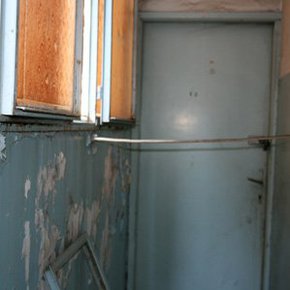
Field notes for 'What We Left Unfinished'
Dispatch One: the Artist and the Archive, June–September 2013
It is not simple to work with an archive in a country like Afghanistan, where books, films and monuments are all subject to burning; stupas are looted and statues shattered; and sites sacred for one reason or another are eroded by both natural and human disasters. Understandably, Afghans are wary of anyone who proposes to 'mine' any cultural resource they still possess.
If you want to work with an Afghan archive, therefore, you cannot address your desires to it directly.
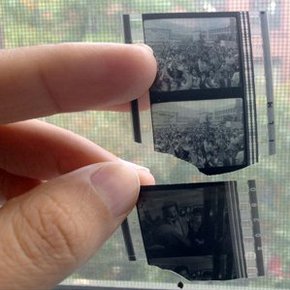
An Archive of Refusal
On Shuruq Harb's The Keeper
I am not going to argue for the writing of Derrida, Foucault, Benjamin or Sekula. Instead, I am going to discuss Mustafa, that 'young image entrepreneur, who collected photographs online, to be printed for sale on the streets of Ramallah.' I will discuss Shuruq Harb, who stumbled upon and exposed Mustafa's images and reframed the collection as an archive of seemingly ordinary events and adapted it into a monument of significance.
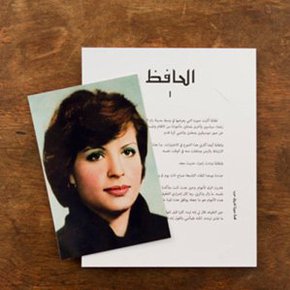
The Spectre (of Knowledge)
The Recordings of the Cosmopolitan
Recently a couple of friends commented on the particular use of titles in my essays, which they felt remained specific, if not distinct. I thanked them for their observation. Titles are similar to book covers – like portals that lead to and reveal the destination. A good title is like a short précis, suggesting the subject matter and, more importantly, its emphasis. Titles remain creatively significant as they help foreshorten the vast territory of an essay or a work of fiction. Like a poetic sketch, a good title can create the necessary liminal space whereon and wherein one starts to explain ideas, concepts and notions that remain implicit in the text.
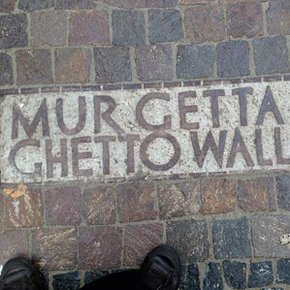
Enacting the Archives, Decentring the Muses
The Museum of Islamic Art in Doha and the Asian Civilizations Museum in Singapore
'The danger of a single story' is a celebrated speech by Nigerian writer Chimamanda Ngozi Adichie, in which Adichie talks about stories and how they matter. Adichie's main point is that a single story, once released into the public domain, becomes a hegemonic one. The power of a single story is that it can make us believe that the world is as the story tells it, without questioning the authors who are constructing the narrative. It is the kind of story that transcends the status of 'fictional narrative' and becomes ontology – or 'reality' in common parlance. I am starting with this reference to Adichie in an essay focusing on the Museum of Islamic Art in Doha and the Asian Civilizations Museum in Singapore because I will be looking at the museum as a story and as a space of narrative.
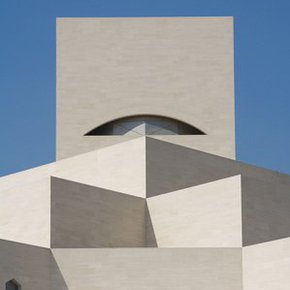
Locating the Archive
The Search for 'Nurafkan'
In 2009, by chance, I came upon an archive in the Bodleian Library in Oxford. It turned out that I was to be involved with this archive in different ways (reading and researching it, helping to raise funds to conserve it, writing inventories of it, and, ultimately, writing about it), over a period of approximately four years. The archive is named after the unpublished manuscript, Nurafkan, which lies at its heart. Nurafkan, or Irradiant in translation, was written by Ali Mirdrakvandi during the 1940s, while Iran was occupied by British and American forces. It is striking to say the least that Nurafkan – which runs to fifteen volumes and is perhaps 500,000 words long – should be written in English, for Ali came from a nomadic family from Lorestan. This choice of language has raised suspicions in both Britain and Iran: what events must have unfolded for a book like this to be written? And what role, in particular, might the British have had to play in it?
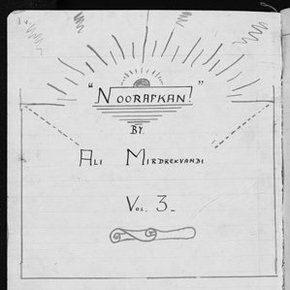
In/distinction
Yasmine Eid-Sabbagh’s 'A photographic conversation from Burj al-Shamali Camp'
As the 'abbreviation that telescopes history into a moment', photography 'is always related to something other than itself.' But rather than being material evidences that speak for themselves, photographs are more like 'silent witnesses' in relation to this 'other', and to the reality that defines the context of their production and reception. Through listening to various voices and stories around and about images, Yasmine Eid-Sabbagh's A Photographic Conversation from Burj al-Shamali Camp (2001-present) – a multi-layered project developed over the time span of more than 10 years – is trying to get photographs 'to speak' about this reality, in this case that of Burj al-Shamali, a Palestinian refugee camp in the South of Lebanon.
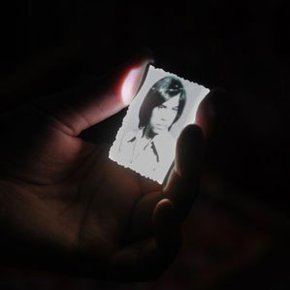
Thieves of Babylon
Repatriation of Iraq's Looted Heritage under International and Domestic Law and Practice
During wartime, art and culture are among the first to suffer but among the last to receive attention. Protecting museums and cultural sites in the wake of bloodshed and destruction is understandably not the highest priority on anyone's agenda. This essay continues the well-debated topic of Iraq's looted heritage following the 2003 US-led, UK-aided overthrow of Saddam Hussein, from the perspective of the international and national regimes that enable the repatriation of such heritage.
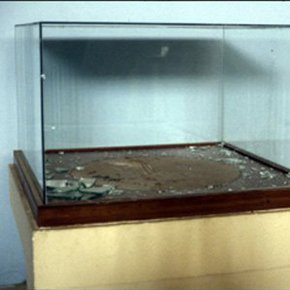
The Crisis of Art in Tunisia
In this essay, Farah Makni Hendaoui reads into the state of contemporary art in Tunisia through a reading of an exhibition staged in 2012 at the Palais Abdelliya in La Marsa, a suburb of Tunis. According to Hendaoui, Printemps des Arts marked a significant moment in the history of fine art in Tunisia. The exhibition provoked a national debate: protests and threats were directed towards participating artists from religious fundamentalists. This essay seeks to address the exhibition and the events surrounding it within the context of contemporary art production and practice in the country that sparked the 2011 Arab revolutions.

Articulating Dissensus
Contemporary Artistic Practice in Iran at a Revolutionary Moment
The relationship between art and politics has always been a topic for heated intellectual debate. In this context, it is arguable that a new political order requires a new artistic language that can give visual form to the new set of ideals by which new ruling elites claim to be guided. The complexities of both artistic production and social transformation are exposed in this paper through the scrutiny of art created in a situation of political urgency. This argument has stimulated theoretical discourse since Plato introduced the concept of the ethical regime of images in his Republic.

To the Barricades
Gezi Resistance, Public Space and the Counter-monumental
For ten days during June 2013, countless barricades delimited an enormous state-free zone in the heart of Istanbul. The barricades were marvellous floating installations that changed every single day. They stood as transient yet solid, vulnerable yet formidable counter-monuments. They were collectively made, unmade and remade on a daily basis, reflecting a key dynamic that was unfolding in the public space they encircled: the de-monumentalisation of politics itself. This essay provides early reflections on the conceptual, aesthetic and political significance of the public reclamation of Istanbul city centre during the Gezi resistance.
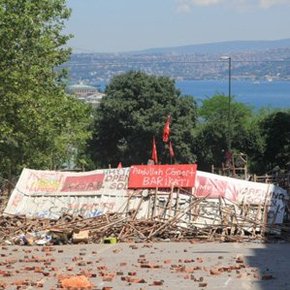
DISPATCH - Here We Are: The Imagination of Public Space in Gezi Park
Creative Time Reports
In this report, published in collaboration with Creative Time Reports, Can Altay considers Gezi Park in Istanbul, a green area next to the central Taksim Square, which has been the site and springboard of a resistance that quickly spread to many cities across Turkey in recent weeks. According to Altay: 'The park has become simultaneously a symbol for the uprising and a utopian public space, revealing an explicitly urban politics that does not register with existing political factions or discourses.'
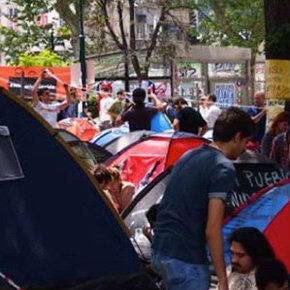
DISPATCH - FITNA AND THE IRANIAN ELECTIONS
Creative Time Reports
In this reflection, published in collaboration with Creative Time Reports, L'Anonyme, an artist in Tehran who has asked to remain anonymous for security reasons, considers Iran's current politicial context and the term, Fitna, which has been used to describe supporters of The Green Movement.
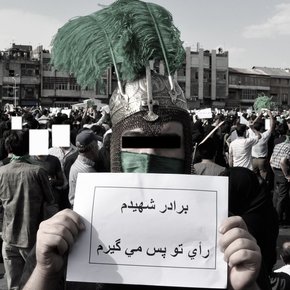
On Reporting, the Documentary and the Aesthetic in Ursula Biemann and Angela Sanders’ Europlex
In this essay, Amy Charlesworth considers how we might productively face the challenge of representing relations between Europe and North Africa through Europlex (2003), a work by Ursula Biemann and Angela Sanders. The essay considers in what ways the work allows for a greater understanding on how the gaze of the increasingly mobile artist falls, in this instance, on North Africa. It examines the ways the documentary medium, in an expanded and critical sense, can be productively deployed in the twenty-first century for foregrounding social relations and understand the ordering of people's lives.
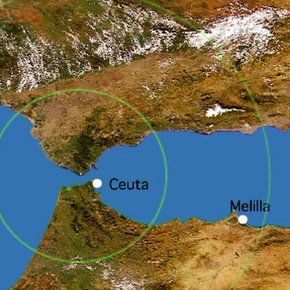
Amman’s West Side Story
Is soft power helping or hindering the state of the arts in Jordan?
East and west Amman each seem to exist as parallel realities. It would be erroneous to claim that they are polar opposites embroiled in an artistic tug of war. Yet the balance of equilibrium appears to be geared towards the west of Amman in terms of wealth, social status, foreign investment and public relations. This begs the question: does the dichotomy between east and west Amman impact on the state of the arts? Does soft power exacerbate or help to alleviate those artistic differences? Can cultural diplomacy initiatives help bridge the cultural divide within the nation's capital city? Then there is the issue of western involvement. The British Council and EU currently have a strong presence in the region; what impacts are these western cultural broker agencies having on local independent artists?
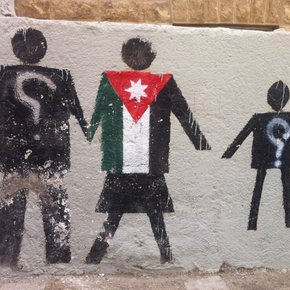
The Future of the Future
Ibraaz Platform 005 Editorial
In this editorial, Ibraaz Editor Anthony Downey responds to the themes of Platform 005, exploring the links produced by the content being published in what has been one of Ibraaz's most challenging platforms to date. In thinking about how a globalised cultural economy and how it affects cultural production and visual cutures in North Africa and the Middle East, Downey considers how the systems and networks of globalisation, for all their patterns of inequitable wealth distribution and uneven development, are also productive.
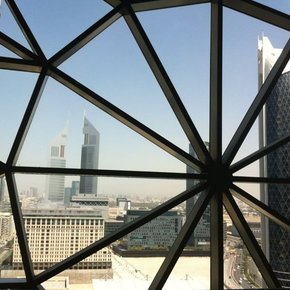
Saadiyat and the Gulf Labor Boycott
The impact of globalisation can be felt in a wide range of interconnected activities and circumstances, including the way cities and communities are developing as a result of deregulated labour conditions and patterns of contemporary migration, underwritten by a neoliberal agenda that ensures an imbricated and predicative form of labour exploitation. The following essay is by Gulf Labor, a coalition of international artists working to ensure that migrant worker rights are protected during the construction and maintenance of museums on Saadiyat Island in Abu Dhabi. A collaborative text, it address the developing situation around labour conditions in Abu Dhabi.

RE:EMERGING, DECENTRING AND DELINKING
Shifting the Geographies of Sensing, Believing and Knowing
In this essay, renowned semiotician Walter D. Mignolo explores the implications of 2013's Sharjah Biennial 11, Re:emerge, Towards a New Cultural Cartography, curated by Yuko Hasegawa. Mignolo, who has an interest in decolonial aesthetics, considers how Hasegawa has used the biennial exhibition format as a way in which to both appropriate and undo the biennial as an institution. Thinking about Sharjah Biennial 11, which announces a certain re-emergence of what has been termed as the 'Global South', Mignolo discusses the decentring taking place in a biennial such as this one, and the historical delinking that comes with staking out such a specific position as the one Hasegawa has produced in Sharjah.
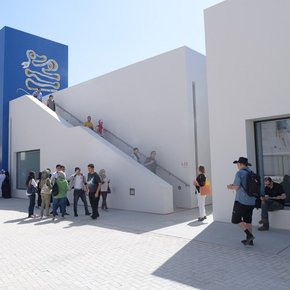
One City, Two Guides – An Untimely Collaboration
What if Rani al Rajji and Michel De Certeau met in Beirut?
The following essay is the manifestation of a critical and dialogic approach to downtown Beirut, in which Sara Giannini follows Rani al Rajji's performative tours and reads them alongside the theories of Michel De Certeau. In the text, Al Rajji and De Certeau guide Giannini through the intertwining of collective memory and private interests, which has conflictually been shaping the new city centre – a glorious eruption of global neoliberalism in post-war Beirut. The result is a collaborative text that presents an alternative perspective to Lebanon's capital city.
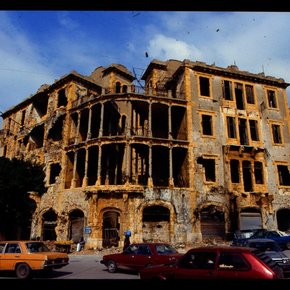
Dubai’s Mystified Promise of Globalization
The three decades preceding the year 2000 brought about significant economic, political and technological changes for the majority of Gulf countries. These changes influenced the way urban areas are structured and function in Gulf cities. According to the United Nations Population Division, between the years 1970 and 2000, the majority of the GCC populations lived in urban areas, with the exception of Yemen. This growth affected the form and morphology of urban-landscape and changed the environment in which people live and work.
This urban growth took place concurrently with the spread of globalisation in the region. Since the beginning of the early 1990s, globalisation paved the way for a new era in the Middle East and the Arab Gulf. This era was received with mixed attitudes and a lot of cynicism towards the global project. In the Arab mind, globalisation holds contested meanings and is often rejected for its associations as a western project and a one-way cultural invasion.

On Being 'The Other' In Post-Civil War Lebanon
Aid and the Politics of Art in Processes of Contemporary Cultural Production
This text is excerpted from the article 'On Being the Other in Post-Civil War Lebanon: Aid and the Politics of Art in Processes of Contemporary Cultural Production' published in Arab Studies Journal 18 no. 1 (Spring 2010): 118-161. It forms the introduction to a larger text, part of a PhD thesis, which addresses the practice, production, exhibition, reception, circulation and sustainability of what has become known as postwar contemporary Lebanese art through a series of conversations between members of the public, artists, cultural critics, curators, and public intellectuals. To accompany the republished introduction, Toukan has written a foreword reflecting on both the period this essay was written (pre-'Arab Spring') to May 2013, when this essay was republished.
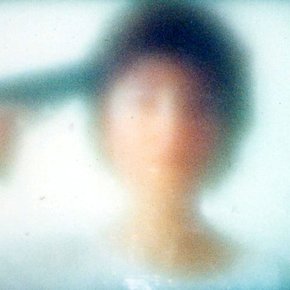
On One Side of the Same Water
Introduction
This year's Jahresring brings together voices by artists, authors, curators, architects, and scientists active in the countries of the south and southeastern Mediterranean. They talk about their projects, about working conditions, and about how individual biographies and cooperative practices reflect political history. Their contributions shed light on an extremely heterogeneous situation for artistic production between Tirana and Tangiers. Hence, this book might seem like a travel report in the overview, with numerous encounters and long stretches left out between conversations and thoughts.
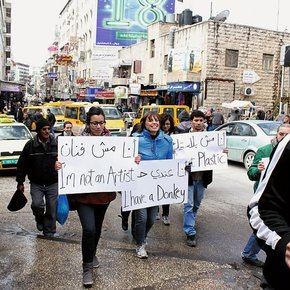
For the Common Good
Artistic Practices, Collective Action and Civil Society in Tunisia
In recent months there have been repeated clashes between so-called extremists and secularists across Tunisia. Of course, these two apparently opposed positions elide a multiplicity of other positions, but the clashes nevertheless intensified following the assassination of Chokri Belaid, the leader of the leftist opposition and a prominent critic of the ruling party Ennahda, on 6 February 2013. In the turmoil that followed many Tunisians were left asking what their revolution, the first in the region, had actually accomplished. It may, in light of these events, seem inopportune or even insensitive to talk about culture in Tunisia. However, I would suggest that this is precisely the time to talk about culture inasmuch as it is the culture of the country – and the right to speak out and openly disagree – that is at stake in these clashes.
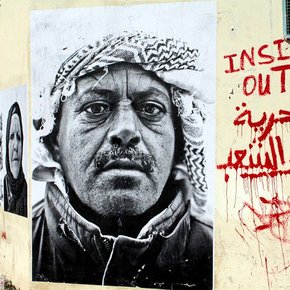
The Many Afterlives of Lulu
The Story of Bahrain’s Pearl Roundabout
Squaring the circle is a problem handed down from the Ancient Greeks. It involves taking the curved line of a circle and attempting to draw a perfect square from it; a task that for centuries mathematicians were convinced they could figure out. In the nineteenth century, when the problem was proved unsolvable, the phrase to 'square the circle' came to signify an attempt at the impossible. But in 2011, within days of the most sustained and widely broadcasted protests in Bahrain's recent history, a circle was named a square. The once unassuming Pearl Roundabout or Dowar al Lulu, famous in the international media as the site of the Gulf's answer to the 'Arab Spring', became Bahrain's 'Pearl Square' or Midan al Lulu.
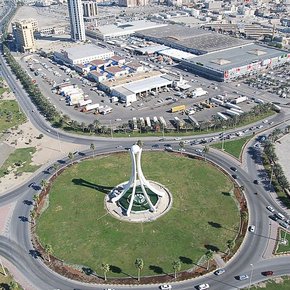
On Revolution and Rubbish
What has Changed in Tunisia since Spring 2011
Spring is the season of change. But one year after the so-called 'Arab Spring', it seems that these changes have done little to attain the goals that brought people out into the streets at the start of these uprisings. The spring revolution in Tunisia ended with the first free elections that took place in autumn 2011. But as each spring is followed by the next fall, many aspirations and yearnings for change have quickly fallen back down to earth. Now that the vernal enthusiasm of 2011 has already evaporated, it is worth reviewing.
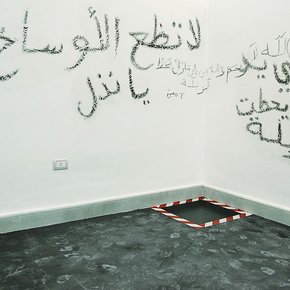
An Explanation of an Irrelevant Monument
On the Memory of a Memorial
In El Madania, southern Algiers, three concrete palm leaves sweep majestically into the sky from a hillside overlooking the city's bay. Visible to anybody who cares to look, this 92 foot monument is the Martyr's Memorial – Maqam El Chahid – unveiled by President Bendjedid Chadli in 1982 to represent national unity and to emphasize the legitimacy of the Front de Libération Nationale (FLN) regime. In this essay, Sarah Gray explores the history of this contentious monument, considering how it fits into the contemporary Algerian landscape.
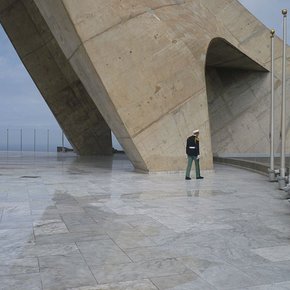
Art’s Networks
A New Communal Model
Every artistic approach throughout history has formed its own language and reshaped the object of art. As for contemporary art, it was technology that determined its orientation: the computer, intermediary spaces, mass communication tools and the Internet have become the new media for many artists working today. It is clear that the digital perspective presents new and powerful sources of creative expression in the field of contemporary art, the Internet being an especially suitable environment for the visualization and sharing of critical discourses. Within this framework, this essay will consider the ways in which Turkish artists are utilizing new media in the local art scene.
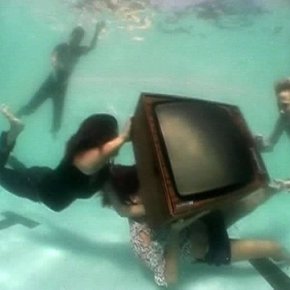
Citizens Reporting and the Fabrication of Collective Memory
Flipping through the pages of one’s memory over the past four years, we stumble upon an array of random ‘revolution’ imagery. A picture book that loosely lumps together clouds of visual material without clear equation between frames of reference or origin, from the Iranian Green Movement and the various uprisings within the Arab world via protesters at the periphery of the Eurozone to different Occupy movements spreading around the globe.
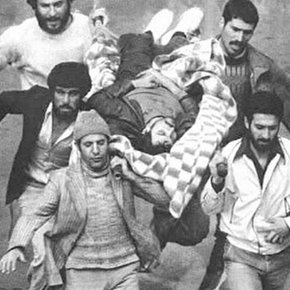
The Paradox Of Media activism
The Net is Not a Tool, It’s an Environment
Media in general, and particularly the Internet, are often considered as instruments. This is theoretically legitimate, but such a definition can be useful only in a very narrow and obvious way. Obviously, media accomplish the task of making communication possible and conveying information – and obviously, the faster and more widespread they are the better, for the purposes of message circulation. Furthermore, we can also obviously say that the Internet and digital media in general possess a force of penetration that was unknown to the printed media of the past – and this makes it difficult, although not impossible, for established powers to control and to censor their messages.
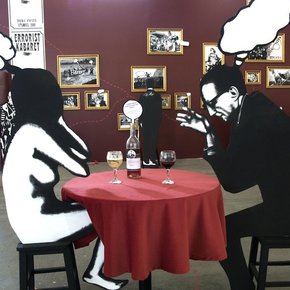
Digital, Aesthetic, Ephemeral
The Shifting Narrative of Uprising
With every new development of communication and information technology, the world changes slightly; and with every political movement, an aesthetic is re-formed. It is an oft-repeated adage that the Internet has altered the way we share information, communicate and see the world but the same was said about television and the invention of the printing press before that. These tools largely familiarized the world with the aesthetics that have become part of our everyday, visual landscape: think of revolutionary-cubism in 1920s Russia or the Kalashnikov-romance photography of 1960s Palestine.
In the last two years of uprisings across the Arab world, we have already seen a certain narrative emerge through images and texts, though it is still too premature to examine these fully. We have also noticed a cycle in the use and resonance of these images and the shifting of narratives. Amidst that, we have already seen a re-cycle of the raw material into fine art pieces making their way into commercial galleries in the UK, glamorising them and in a sense dislocating them from the mode in which they were created. By July 2011, in London alone, the three-week Shubbak festival was immediately problematised for that exact reason by attendees uttering their annoyance at the immediate cliché of an ongoing political crossover. The rganisers' hasty reprogramming to include the 'tumult of the Arab Spring' was noted by critics.
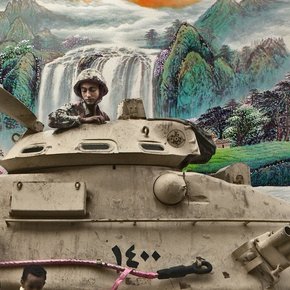
The ‘Cut-n-mix’ Culture
The Impossibilities of Production in New Media
In this essay, artist and writer Zeigam Azizov explores notions of production, autonomy, coding and naturalization in relation to the different uses of contemporary media. Azizov considers the use of new media and its role in the creation of a contribution economy that eschews typical modes of production, arguing that new media fosters new aesthetics through a process of cutting and mixing – a process which, as he points out, has its roots in editing techniques forged in early Russian ‘Kino’ cinema. With this essay, the writer articulates the need for the end user to adopt and co-opt the media, rather than be controlled by it.
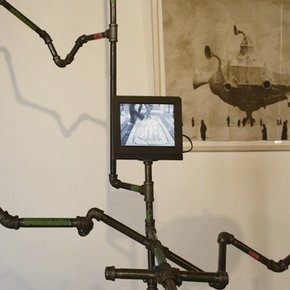
The Art of the Written Word + New Media Dissemination: Syria
In this essay, Tarek Khoury, Lebanese designer, writer and Assistant Professor in Graphic Design at the Lebanese American University examines the visual characteristics of Syrian activist images and videos disseminated by way of online media. Through his examination, a unique coexistence of old and new media emerges. As Syrian activists handwrite on bits of scrap paper, walls and cardboard, their voices are expressed through traditional media forms. However, it is through new media that their expressions are recorded and circulated. The outcome is politically-charged imagery disseminated within the realm of new media communications but with an innately visceral, human aesthetic. This essay looks into the interconnections between traditional and new media as well as changing perceptions of each due to their opposing characteristics.

Common Grounds
Artistic Practices, Civil Society, and Secular Determination in Tunisia Today
In the last year or so, a perennial issue has re-emerged in discussions of contemporary art practices in the Middle East and North Africa: what is the relationship of art to politics; or, similarly, what is the relationship of the aesthetic to revolutionary forms of activism? The confusion, intentional or otherwise, between art as a practice and art as a form of civil activism has given rise to a number of considerations, not least the role of art, if indeed it has one, in engaging civic and public space. This confusion has produced mixed results and a degree of scepticism towards opportunistic curatorial remits that co-opt art practices into the political aesthetic of revolution and, thereafter, into the service of a revolutionary politics. These curatorial gestures expose two relatively opposed positions in current debates: for some, art as activism negates the aesthetic dimension of art; whereas for others, art without activism of some sort – or at least a political inclination if not motivation – abrogates the authority of art as a form of social commentary. Neither position, I want to argue in what follows, is tenable – if indeed they ever were – and both need to reconsider the potential of a common ground between them, nowhere more so than in light of ongoing events in the region and elsewhere.
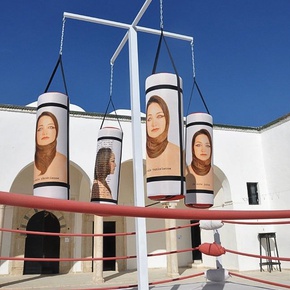
Staging the Transition in North Africa
Theatre As a Tool of Empowerment
In the two years since the beginning of the ‘Arab Spring’, North African theatre practitioners have successfully invested the stage to open new spaces of public dialogue and debate, using the Internet and new media (Facebook, Twitter, You Tube) to further promote their work and to galvanize the youth. This essay will focus on selected plays from Tunisia, Egypt and Morocco performed since 2010: while Tunisia and Egypt have managed to radically change their political landscape through protests and have since organized elections to decide on their new leaders, Morocco has been engaged in a relatively peaceful transition, and provides a useful comparison. Moroccan artists have been active in voicing their support for the revolutions, and have a very socially engaged theatre scene that is less restricted by censorship. I argue that the ‘Arab Spring’ has led to a redefinition of the relationship between art, theatre and power, and has thus renewed a medium crippled by censorship. Through the prism of the revolution, theatre and performance have helped North Africans to express their thoughts and emotions and make sense of an exhilarating but confusing part of their history, as well as to empower them as citizens and as individuals.
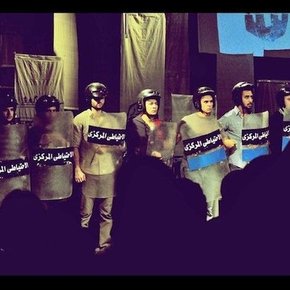
TASWIR Projects
TASWIR Projects is a nomadic platform for artistic and creative thinking that grew out of the TASWIR exhibition 2009-2010 at the Martin-Gropius-Bau in Berlin. In this exhibition, over 50 artists, thinkers, curators, and other intellectual agents from different parts of the globe participated in an experiment of free association and poetic documentation, taking iconic artefacts, images, objects, manuscripts, and other items of classical Ottoman, Persian, Arabic, and Indian provenance out of context. Diverse matters generally related to Islamic art and culture were raised. The exhibition drew upon concepts like white ink, in-betweens, miraculous beginnings, indeterminacies, a-linear timelines, forthcoming pasts, fractal epistemic architectures, and so on. The TASWIR exhibition explored those concepts by way of artistic and other research in the form of an ‘exhibition within an exhibition’ inside the museum’s inner atrium.
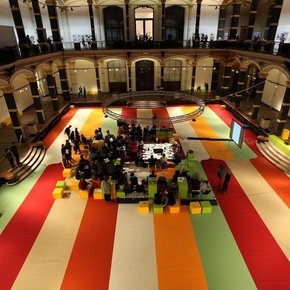
Propaganda Fantasies and Stand-in Heroes
The following research essay by Foundland, based on visual examples extracted from social media websites, contemplates the appropriation of images and characters from a western context as used for the purposes of propaganda and protest in Syria today. The following examples are brought together as a way of thinking about the use of contemporary popular culture and particularly cartoon iconography as it is appropriated by pro and anti-Al-Assad camps in Syria. What does it mean when images and icons from a western context are used and appropriated within a non-western political context? Do layers of icons bring additional meaning to familiar western characters or do we perhaps need to re-learn a way of viewing them?
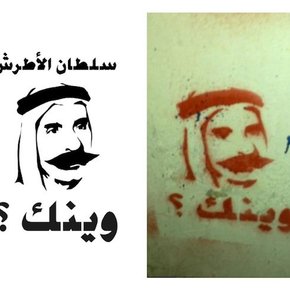
Archives, Museums and Collecting Practices in the Modern Arab World
An Introduction
In the introduction to their new book, Archives, Museums and Collecting Practices in the Modern Arab World, editors Sonja Mejcher-Atassi and John Pedro Schwartz outline a number of critical tensions inherent within museum practices of the Arab world. Seeking to fill the dearth of research in the increasingly pertinent field of collection studies, Mejcher-Atassi and Schwartz question what constitutes a collector in politicized and contested Arab states. They outline the complexity of authoring museological narratives that are sincere to local cultural production, as opposed to ones that function as an imperial interpretation of what constitutes 'locality'.
Mejcher-Atassi and Schwartz assert that there is urgency for collectors to salvage a part of modern Arab identity, arguing that a museum's collecting practices are in and of themselves, a form of rescuing. Ultimately they argue that collections require a re-visioning to evidence that each and every Arab museum bears the imprint of the many local lives who constitute its shared narrative history.
What follows is the introduction of their new book, which is published by Fernham: Ashgate.
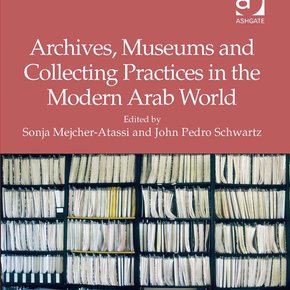
In the Event of Fire
Precarious Images, the Aesthetics of Conflict, and the Future of an Anachronism
On a recent return flight from Beirut, I chanced upon a book in the airport bookshop that foregrounded, no doubt unintentionally, many of the problems associated with examining the physical and psychological aftermath of the Lebanese Civil War (1975-1990). The book in question seemed particularly naïve in its approach to the antagonisms that continue to underwrite (if not undermine) urban development in the city of Beirut. The front cover of the book, titled Beirut's Memory and published in 2003, appeared relatively innocuous to begin with and used a visual design known as 'lenticular', a process whereby an image is refracted and appears to change or move when it is viewed from different angles. The front cover showed two images of Place de l'Etoile – also known as Nijmeh Square – in the heart of Beirut Central District (or BCD as it is known to its real estate developers). Depending on the angle of viewing, one image either showed the square as it was during the Civil War, its buildings shrapnel-blasted, broken, and pock-marked; or, at another angle, the square more or less as it is now, resurrected and unbroken, the buildings restored, smooth and sandblasted clean. In the former image, Beirut is a forbidding and forlorn site of conflict; in the latter, the square is made whole again, complete with strolling tourists taking photographs and ambling Beirutis enjoying the open, un-conflicted, largely pedestrianised space.
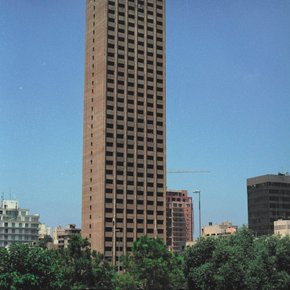
Ibraaz Platform 003 Editorial: What Was Lost?
In January of 2012, Ibraaz invited a number of individuals to respond to a question concerning how artistic practices negotiate institutional contexts, public spaces, and the ideal of civil society in the Middle East today. In doing so, we wanted to broaden this discussion beyond the region and engage in a debate about the pressures and demands placed on artistic practices within the instrumentalizing logic that underwrites the reductive rhetoric of our revolutionary, neo-liberal, globalized, and late-capitalist milieu. We are pleased to announce that we not only had a significant amount of feedback on this most vexed of questions but received a variety of responses that ranged from supporting artistic practices that, successfully or otherwise, negotiated the exigencies of institutional, public and civil spaces to responses that pointedly questioned the need (and, indeed, the inherent demand) for art to engage with such issues at all.
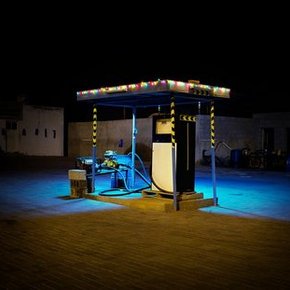
A Philosophical Banquet in the Country, staged by Dar al-Ma’mûn
An entire village in a public square: teenage boys and girls, women, men, and a lot of children excited to be together. They are waiting for something: someone has come from Rabat to speak about public space, about what they've just achieved by virtue of being gathered together on hay bales and smiling, smiling indefinitely.
They've been assembled for weeks in fact. A woman from Iceland, named Elín, made an installation in the shape of a mud brick labyrinth with built-in mirrors, which doubles as both artwork and play area: a functional artwork.
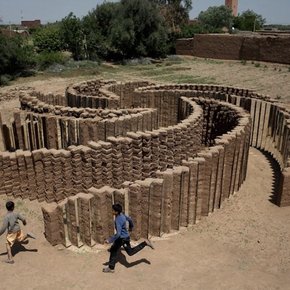
Productive Contexts and Contemporary Restraints
The Practice of Contemporary Art in Algeria Today
In this essay for Ibraaz, writer and critic Alice Planel explores the conditions of artistic production in Algiers, a city still affected by the legacy of a devastating civil war in the 1990s. Taking the third FIAC Algiers (2011) as her starting point, Planel references some of the key players promoting, discussing and exhibiting contemporary art in the Maghreb and talks to Algerian artists including Amina Menia and Atef Berredjem about how they develop their practices and negotiate the many difficulties inherent in getting their work produced and displayed. In doing so, Planel reiterates the need for scholarship on the subject of contemporary art in Algeria and across the Maghreb, and explores some of the tensions arising therein between the traditional and the contemporary. Due to discriminatory uses of the word 'modernity', she argues, it is also the very taxonomy and history of modern art that inhibits analyses of modern or contemporary Algerian art.
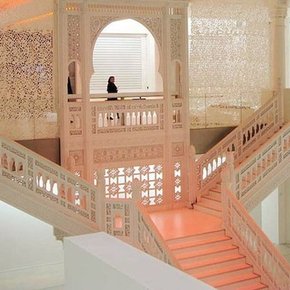
The Social Impulse
Politics, Media and Art after the Arab Uprisings
In the wake of the uprisings that swept the Middle East since December 2010, a spotlight has, for better or worse, fallen on artists from the region. In this essay, Egypt-born, UK-based writer and curator Omar Kholeif looks at some of the problems attending this increased interest in art from the region and the pressure on artists to create works that not only respond to revolution but answer to 'Arab Spring'-themed exhibitions. More specifically, he discusses the work of artists who had been developing new media and digital art practices before the revolutions, practices that became not only televised but distributed across an array of online platforms and networks. Kholeif also examines the ways in which these artists are channelling their energies into grass-roots, artist-led initiatives that allow them a measure of independence both from the art market and its requirement that they comment on the political situation – and, ultimately, from the political situation itself. Could, Kholeif asks, the relationship between the 'open source' ideology in recent new media history and the proliferating 'share' culture of revolutionary dissidence have created a grey area whereby artists from Egypt, to name but one country, who work with new media as a resource are being asked to comment or subscribe to an artistic interpretation of the Arab uprisings?
This essay is accompanied by an interview by the author with Sarah Rifky, curator at the Townhouse Gallery in Cairo.
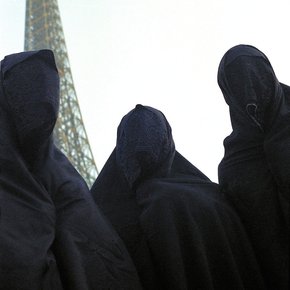
Fast Forward to the Past
Cultural Institutions, Urban Development, and Regional Cinema in the Gulf Today
When drawing a visual image of the Gulf, it is perhaps difficult to dissociate it from the elaborate architectural renderings peddled by ambitious architecture and engineering firms, and the glittering vista of skyscrapers, highways, and man-made islands that have come to epitomize the area. Writer and critic Sheyma Buali takes a look at the new crop of films, be they shorts, documentary or narrative films, that look past the computer generated images (CGI) to the fast-disappearing reality beneath it – Bedouin life-styles, livelihoods based on fishing, homes made of stone rather than steel, and the attempts of local peoples to adapt to their new surroundings.
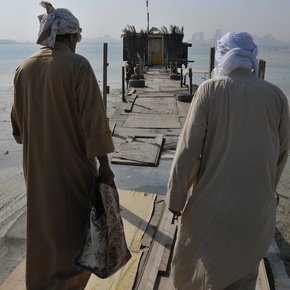
Occupying the Occupied
Perceptions of Occupation and Control in Cyprus
The history of Cyprus is a fraught one: the Mediterranean island has been a site of occupation and control for hundreds of years. Istanbul-based curator Basak Senova became engaged with the island's politics of division in 2010, when she and Greek Cypriot curator Pavlina Paraskevaidou devised a collaborative artistic project entitled UNCOVERED: Nicosia International Airport, which used the closed Nicosia International Airport as a site for investigating the mechanisms of control at work on the island – divided since 1974 and subject to a UN peacekeeping force since 1964 – alongside notions such as memory and commons.
The works and activities by artists participating in the UNCOVERED project laid the ground, Senova here argues, for the Occupy Buffer Zone movement that developed in late 2011 and which sought to occupy that which was already occupied. In an action that exposed the absurdity of the controls on the beleaguered island, these activities rendered disused public spaces public once more.
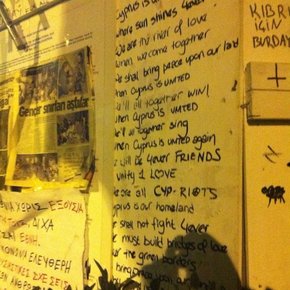
The Urban Observatory of Beirut
For a Polysemic Reading of Both City and Territory
After four years in Damascus, the Institut français du Proche-Orient (Ifpo) urban observatory has returned to Beirut since October 2011, where it was created exactly 20 years ago, in 1991. Beyond the purely factual description heading its institutional page, the department itself is relatively atypical, and this begins with its history.
Indeed, initially it was a Franco-Lebanese reflection group linked to the CERMOC (Center of studies and research on the contemporary Middle East) devoted to the observation of an urban space in distress. It had been created in the wake of the civil war, having as its goal to 'reflect upon the reconstruction of Beirut … and to uncover the different readings the city's space revealed and the meanings attached to these.
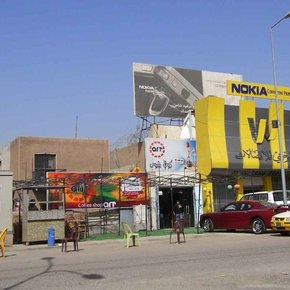
Ramallah, in a Student Encounter
Ramallah's architectural landscape has changed dramatically since the signing of the Oslo Accords in 1993, in part due to a building boom bolstered by foreign investment. In Ramallah, in July, a four-day event entitled 'Designing Civic Encounter' took place. Initiated by online platform ArtTerritories, it was envisioned as a 'series of interventions engaging in existing and potential forms of urban development and public culture'. In this text for Ibraaz, Yazid Anani, from the Department of Architecture at Birzeit University, corrals the thoughts of some of his students on the many themes that emerged from 'Designing Civic Encounter': their dissatisfaction with Ramallah's neoliberal urban development, which is creating a series of gated and atomized communities; the investment in 'starchitecture' in the Gulf States; and other spatial issues relating to the present-day geography of the Palestinian territories.
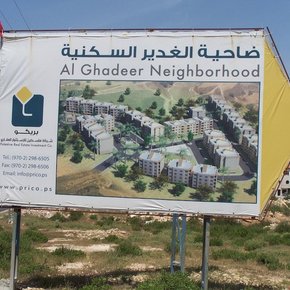
Comparative Notes on the Cultural Magazine in Lebanon
Magazines are often an indication of the intellectual and cultural life of a city or country at a specific point in time. Beirut's history of avant-garde magazine production between the 1950s and 1970s is a rich and largely untapped archive for cultural critics to mine. Here, Mirene Arsanios, a writer and art teacher at the American University of Beirut, delves into this relatively unexplored historical period to understand the mandates, positions and even rivalries between some of the magazines produced during this creatively fertile period. For historical perspective, she also speaks to editors of current and forthcoming publications in Lebanon, such as Kalamon and Portal 9, for their take on the function of cultural magazines in general, and the specifics of their own projects.
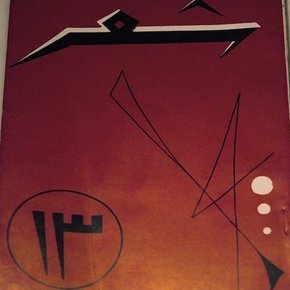
Go Down, Moses: Tourism, Space and Ideology.
Reflections from a book on South Sinai
South Sinai, in Egypt, is a place freighted with history. Long inscribed into the Biblical narrative, it was a locus of conflict in the twentieth century and is now a thriving tourist destination.
Cairo-born photographer Ahmad Hosni's book, Go Down, Moses: a book on South Sinai, is not a documentary project. While his stated aim is to 'document and comment on a place in the state of becoming a tourist enclave', the project defies some of the basic tenets of the documentary photo-story, featuring a sequence of un-captioned photographs laid out in an album-like manner rather than in a series. Eight newly-commissioned articles by a number of scholars function as extended annotations through which the photos can be contextualized.
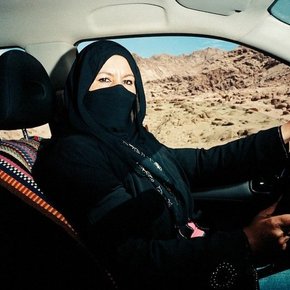
How I became a politician, or,
How theft turned me into an artist
In June this year, a painting by Pablo Picasso arrived in Ramallah, where it was exhibited for one month at the International Academy of Art Palestine. Picasso's 1943 Buste de Femme, on loan from the Van Abbemuseum in Eindhoven, the Netherlands, and estimated to be worth $7 million, arrived in the West Bank after two years of negotiations. Once installed in Ramallah, it caught the attention of the world's media and was lauded as an instance of art's ability to transcend international and local political difficulties.
The images that accompanied reports of the exhibition in the international media inevitably showed the painting flanked by two armed security guards. As such, the painting was always framed within the context of the Palestinian situation, one that necessarily entails security and surveillance. Artist Yazan Khalili's text is a first-person account of one man's audacious theft of the painting from its heavily-guarded viewing space, and questions whether the work could be appreciated in its own right when the political implications of its display were as, if not more, visible than the work itself.
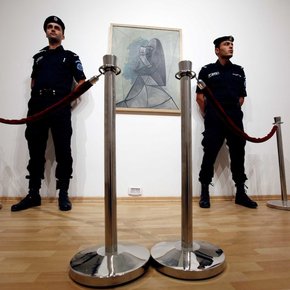
Reza Aramesh
Walking in the Darkness of a Promised Light
In Regarding the Pain of Others, acclaimed writer Susan Sontag's 2003 meditation on how we interact with photographs of violence and suffering, she asserts that, 'the appetite for pictures showing bodies in pain is as keen, almost, as the desire for ones that show bodies naked'. For Sontag these twin desires intersect most vividly in the rich iconography of suffering seen in Christian art, from images of scenes from Christ's passion to those commemorating the often gruesome deaths of saints. Recently on view at Dubai's Gallery Isabelle van den Eynde, Reza Aramesh's new photographs and sculptures draw specifically on this rich iconography, tapping into the powerful hold that images of bodies uncovered and in pain have on us, to further his investigations into the particular body language of violence and suffering.
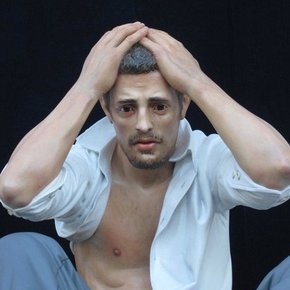
Kutluğ Ataman
The Enemy Inside Me
The Enemy Inside Me at Istanbul Modern is the first ever retrospective in Turkey of the internationally acclaimed artist Kutluğ Ataman, an artist who has shown his work perhaps more extensively abroad than in his home country. Born in Istanbul in 1961, Ataman studied cinema at the Sorbonne, and went on to receive his MFA in cinematography at UCLA. He was already considered an avant-garde filmmaker in Turkey and internationally, having received prestigious awards such as The Turkish Film Critics Association's Best Director and Best Film and Best Screenplay Awards with his first feature-length film Serpent's Tale (1994).
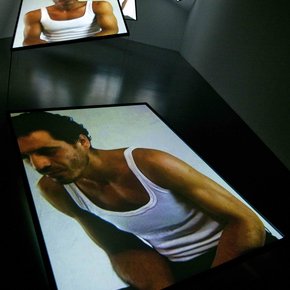
Making Men through Hip Hop in Jerusalem’s Shu’afat Refugee Camp
Palestine, under a constant state of exception that has become a norm as opposed to an abnormal state of affairs, continues to exist under the condition of non-representation before the law and the strictly enforced restrictions placed upon individuals and forms of self-representation.
In her essay for Ibraaz, Ela Greenberg asks a singular question: can music, specifically that of the Palestinian rap group G-Town, be considered an effective tool of resistance under such conditions.
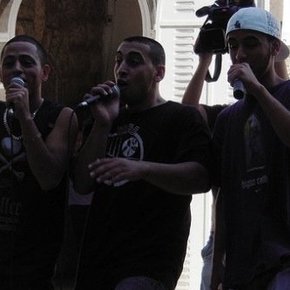
State Ending and the Durable Illusions of Empire
The mayhem following the USA-led invasion of Iraq in 2003 is often portrayed as the result of mismanagement and poor planning. The then US Defense Secretary Donald Rumsfeld infamously said 'stuff happens' when confronted with evidence of the looting of the National Museum in Baghdad and suggested it was 'part of the price' for liberation of Iraq.
In what follows, Raymond William Baker, one of the editors of Cultural Cleansing in Iraq: Why Museums Were Looted, Libraries Burned and Academics Murdered (Pluto Press: London, 2010), argues that such acts were not an inevitable after-effect of military incompetence and negligence but the inevitable result of policies that actively disregarded the imperative of protecting cultural landmarks in favour of base economic motives and short-term strategic advantage.
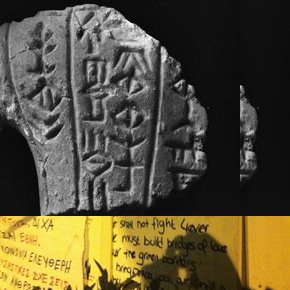
Ethnography + Art: Convergence or Collision?
One of the key issues in discussions of visual culture in the Middle East today concerns the role of research methodology and how we approach and understand the plurality of artistic practice. Although complicated by its relationship to Orientalist endeavours, a qualified version of anthropological methodology still has a foothold in any discussion of heuristics and the interpretation of history.
In this essay, Mark R. Westmoreland questions, in the first instance, any easy appropriation of anthropology as a methodology and thereafter suggests, in both the content and the form of his essay, that we need a more radical version of anthropological investigation with which to explore contemporary art practices. More specifically, he argues that certain ideas - the performative aspects of quotidian experience, embodied meaning, affective intensity, and agency of objects and images - are not only shared areas of interest but pivotal in our understanding of both contemporary visual art and anthropology alike.
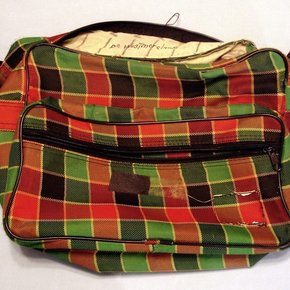
Understanding the Threat to Arab Youth Uprisings
Facebook, Twitter, blogs, graffiti, videos, and songs – all have contributed to recent events in the Middle East. While it is difficult to gauge the exact extent of the actual influence of social networking in these upheavals, it is generally considered that it has been one of the pivotal elements in the organization of youth movements and protests throughout the region.
However, and although we cannot appeal to one factor in explaining the emergence and durability of social networking, Joe F. Khalil suggests here that although groups of young people articulated a cultural politics that remains distinct from the socio-political spheres that rejected them this does not mean that the mass media has not attempted to co-opt both them and their message. It is in relation to the latter that Khalil notes a disturbing gulf between mainstream media's characterization of young people's activities and what young people themselves are expressing through their own media.
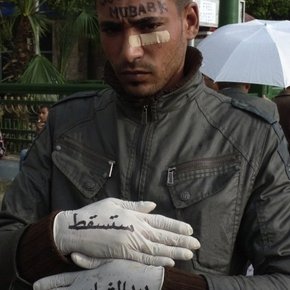
Beyond the Former Middle East
Aesthetics, Civil Society, and the Politics of Representation
It would be tempting, in light of recent events in the Middle East, to render interpretations of contemporary visual culture within and beyond the region as being somehow responsive to the socio-political upheavals and freedoms currently being fought over. However, as Anthony Downey argues here, there is the heuristic danger that such readings would be not only prescriptive in the long term but also reductive insofar as they delimit visual culture to a singular event or series of events.
The aesthetic, while of course moored in a particular moment in time, speaks to future ways of thinking and understanding. Visual culture speaks to a future and in so doing proposes a promise of sorts – a horizon of an engagement (reception) and further possibility (dissemination). To this end, Downey argues, visual culture not only reflects upon reality but anticipates realities to come, the networks and discussions that emerge from cultural discourse, the freedom to express ideas, the imperative of both political representation and the means of self-representation and, in those future moments, the emergence of civic society and public spaces within which ideas can be expressed without fear of repression.
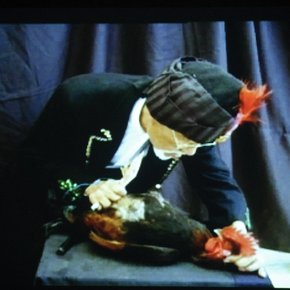
Revolution and Cultural Mutation
Recent events in the Middle East have shown the world something incontrovertible: official media outlets no longer have a monopoly on the systems of communication that dictate both the content and level of information in circulation at any given time. Social networking, for one, has fundamentally re-territorialized the means of communication throughout the Middle East. In recent months, as Rachida Triki points out in her essay, social networks have acted 'not just as the mirror of a reality, but a representation of the reality to come'. Social networks, she proposes, 'become participatory apparatuses allowing interactivity and shared creation through a system of transmission'. Calling for the civic participation of spectators and actors alike, the artists she discusses aim to recreate social links and bring communities into being – which would appear to be precisely the ambition of the protestors who have bravely taken to the streets throughout the region.
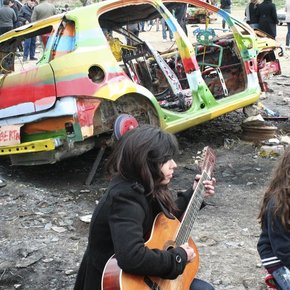
Talinn Grigor, Building Iran
Modernism, Architecture, and National Heritage under the Pahlavi Monarchs
Building Iran: Modernism, Architecture, and National Heritage is a remarkable account of Iranian modern history. Architecture played a crucial part in this history: it was a major political tool in re-appropriating Iranian cultural heritage alongside secular reforms during the Pahlavi monarchic rule of Reza Shah (1925-41) and his son Mohammad Reza Shah (1941-79). The book highlights the pivotal role played by the Society for National Heritage (SNH), established in 1922, in executing a major modernist architectural overhaul in Iran. The SNH was responsible for commissioning various monuments and buildings throughout Iran, which included mausoleum style tombs for Iran's treasured poets such as Ferdowsi, Hafez and Omar Khayam, the first archaeology museum and first national library, as well as various architectural preservation projects.
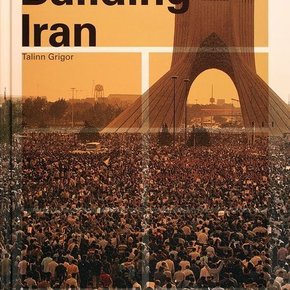
10th Sharjah Biennial
The UAE's sole biennial, the Sharjah Biennial organized by the Sharjah Foundation celebrated its tenth edition, entitled Plot for a Biennial against the backdrop of recent revolts in the Arab world. The biennial was guest curated by Abu Dhabi Guggenheim curator Suzanne Cotter, creative director of ArteEast, Rasha Salti and associate curator Haig Aivazian a Chicago based artist/curator, with Jack Persekian retaining his role as overall biennial artistic director. Thematically this year's biennial loosely drew on keywords, which included, but were not limited to: Treason, Necessity, Insurrection and Corruption and despite Cotter's aim of defining a biennial that 'sketched out a porous terrain that endeavour[ed] to escape from the dialectics of art and politics,' as stated in her catalogue curatorial statement, the exhibition inevitably and ironically created a junction with recent political events reverting back to art and politics in contemporary art.
